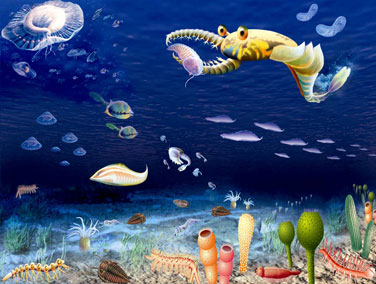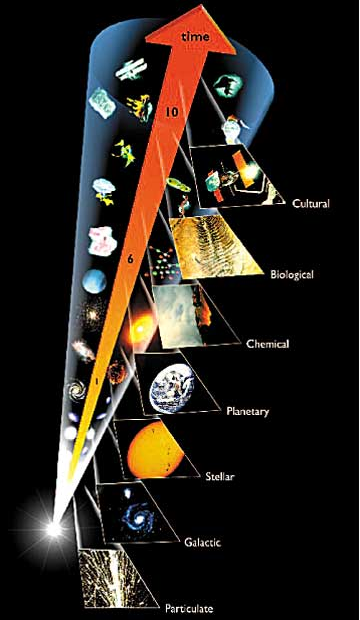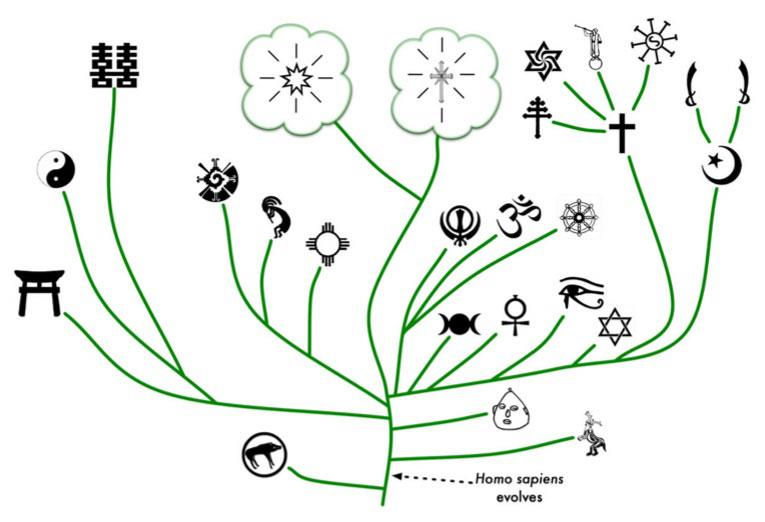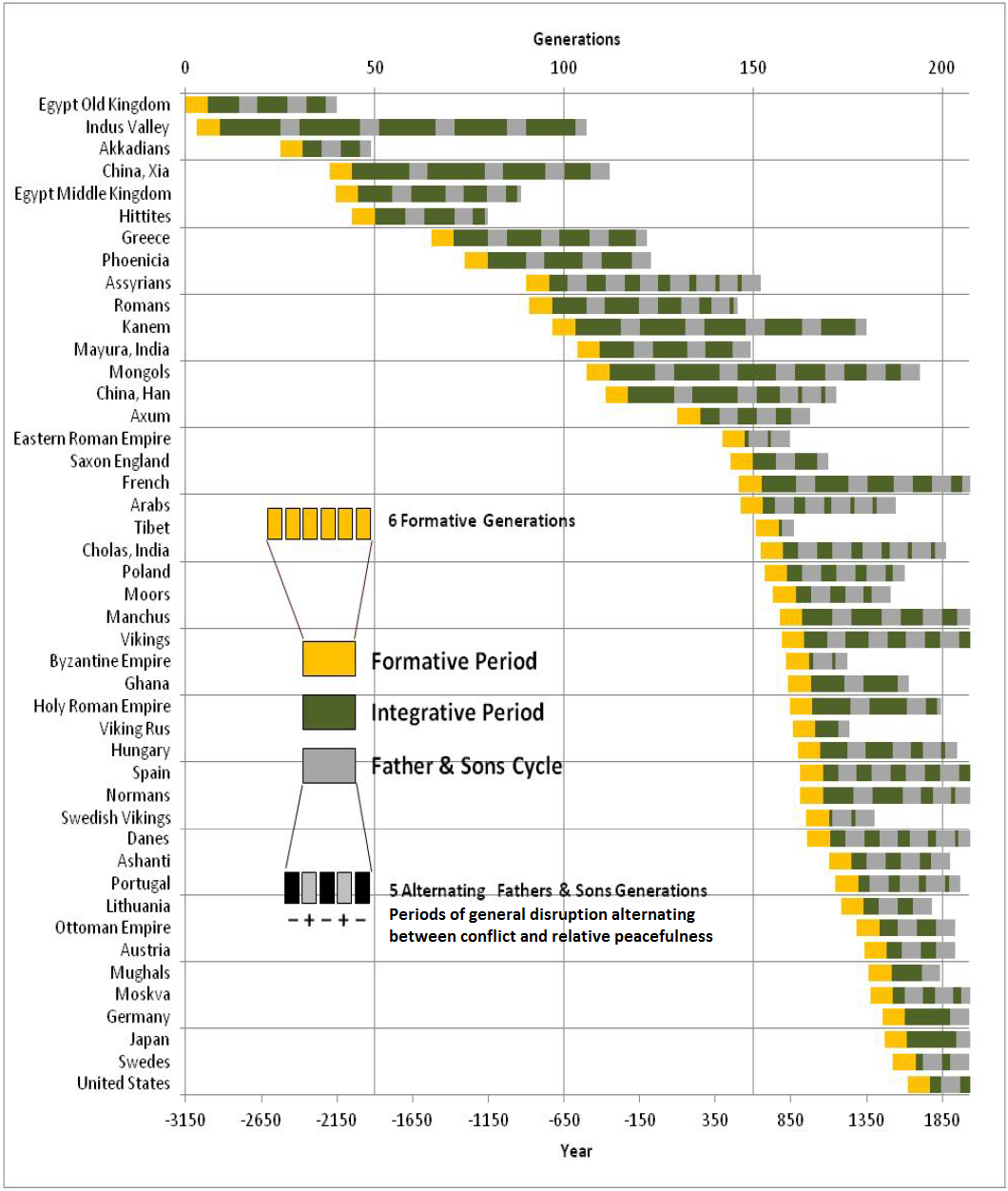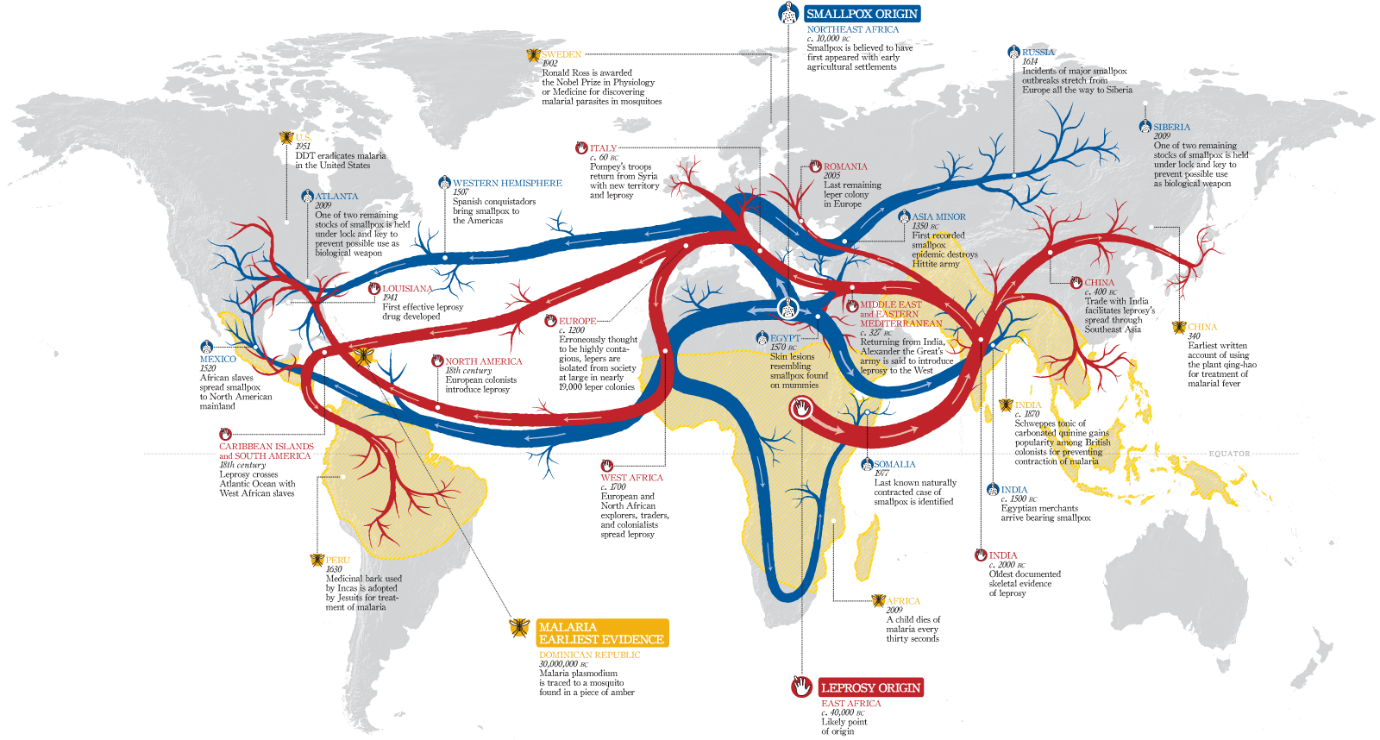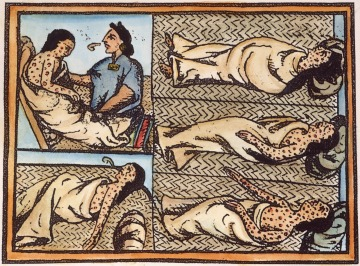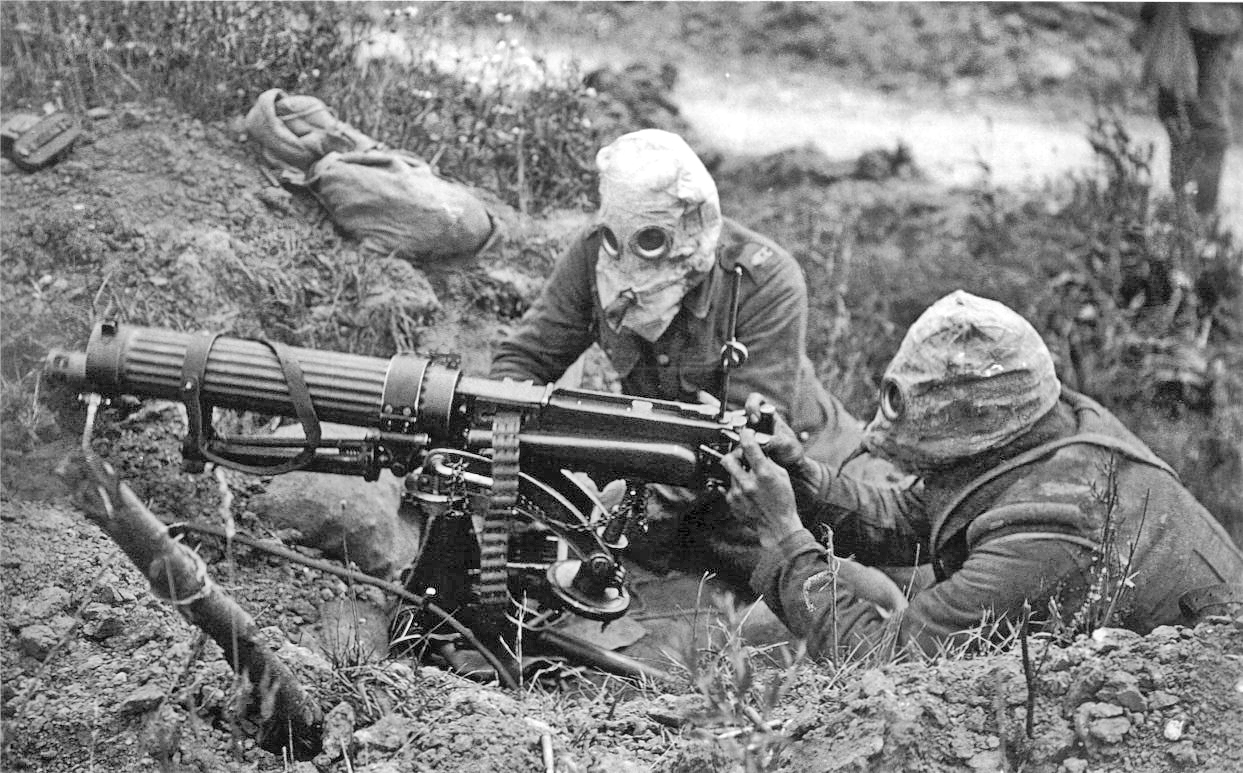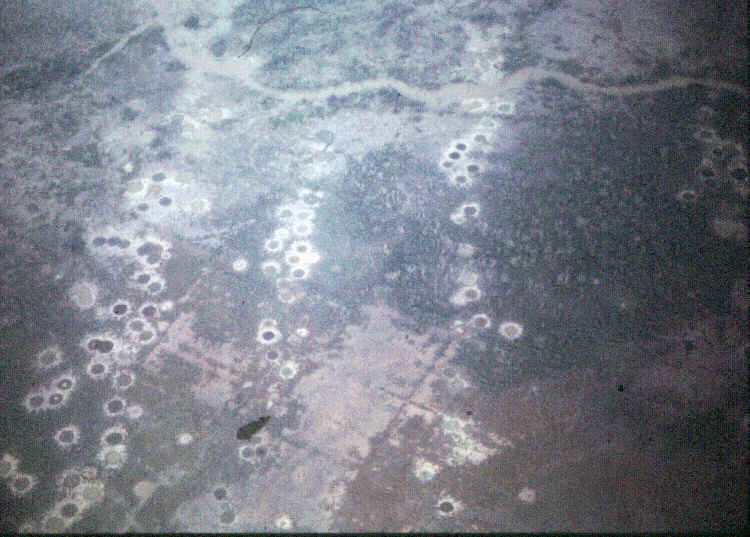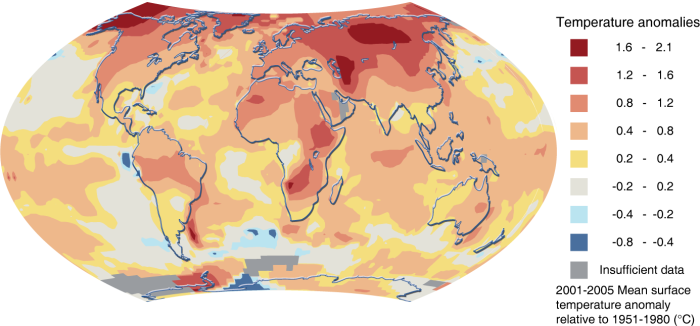Rap History of the World © by Philip Day
Contact: Twitter @PhilipDayUKRHW is going to Camden Fringe 2019!
5th, 12th and 16th August 6.45pm
Click here for tickets
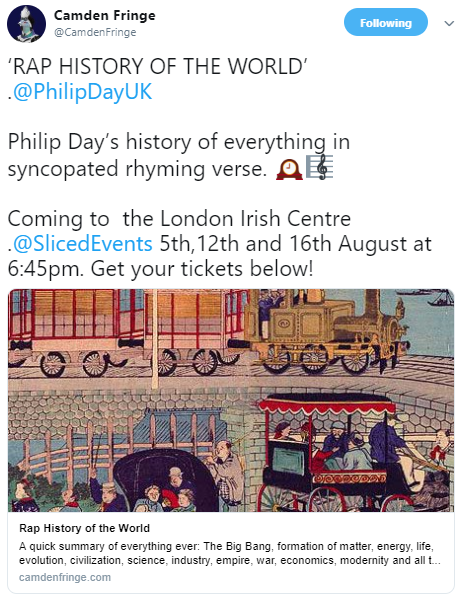
Tickets: https://camdenfringe.com/show.php?acts_id=2641
Welcome to the Rap History of the World! Check out the videos here for Act I Parts I and II... scroll down for a longer introduction, the full lyrics and commentary notes. Enjoy!
About - Contents (full lyrics) - Disease Lesson - IBHA 2016 Presentation (27Mb pptx) - Teaching Notes: Act I, Act II, Act III - Feedback
Act I Part I - The Physical Universe
Act I Part II - Life and Evolution
Introduction
Act I starts with the Big Bang and (very briefly) narrates a few developments in the physical universe before charting major milestones and trends in the emergence and evolution of biological life, and then human evolution down to the Neolithic.
Act II, covers pre-industrial 'civilized' history: the emergence of agriculture and the first states and civilizations, and themes in their histories, including interaction and exchange, ecological influences, demographic cycles and the role disease.
Act III explores various aspects of the 'modern revolutions' since c.1500 AD, including the 'rise of the West' and reactions and internal turmoil generated by it among the rest of the world, until the recent re-balancing of global power, and finally a brief survey of problems and opportunities in the world today.
You can click on the symbols to reveal commentary notes (click again to close). The typical purpose of these is to point you to the works of the various authors who have inspired the particular argument. Occasionally they digress on a tangent about some theory of mine, or elaborate or add a point of information to the verse. However in general they will not explain what the rap is trying to say, nor reveal subtle allusions - that would spoil all your fun!
The RHW itself was written May-July 2013, and this website including pictures and commentary notes were completed in September 2013. Thanks to UX guru Fraser Deans for technical assistance.
The original inspiration for this project came from watching Baba Brinkman's highly entertaining and award-winning live show, The Rap Guide to Evolution, which I saw in London in 2010.
Feedback is very welcome - there is a form here, or email the author on contact@raphistoryoftheworld.com.
Finally, I would like to thank all the image owners who kindly gave their permission to use their images here, and also those who donated their images to the Creative Commons.
Enjoy!
Philip Day
London, 2013
Contents
(Click these links or keep scrolling for lyrics...)Act I - The Physical Universe, Life and Human Evolution
The Early Universe
Gravity, Stars and Planets
The Origin of Life
Gaia Theory
The Eukaryote and Macroscopic Life
Reflections on the Evolutionary Process
Human Evolution - Divergence
Human Evolution - Genus Homo
Hunter Gatherers
Act II - Agriculture and Civilizations
Agricultural Revolution
The Human Web
Macroparasites and Civilization
Cultural Achievements
Religion
Recurrent Collapse
Demographic Cycles
Ecological Catastrophe
Disease
Act III - World History since 1500, inc Scientific and Industrial Revolutions
The Rise of the West
The Age of Discovery
The Columbian Exchange
The Scientific Revolution
The Industrial Revolution
European Expansion and Response
Enlightenment
Communism
State Building and Nationalism
20th Century Climax
The World Today: Problems and Opportunities
Commentary notes will appear in these bubbles.
Click on the ? again to close.
Click on the ? again to close.
Act I - Evolution: Physical, Chemical, Biological, Human from the Big Bang to the Neolithic
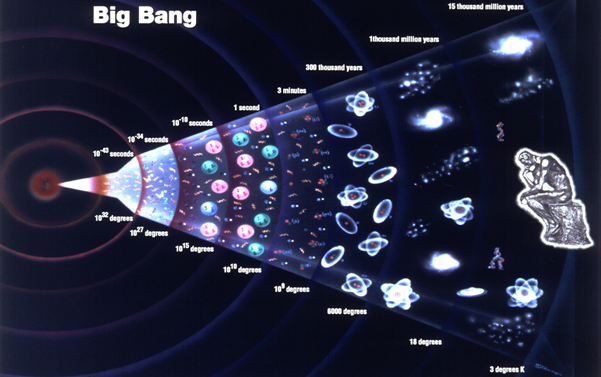
Big Bang
Where it all began
Deep time
Beyond imagination
First pure radiation
That expanded and stretched
Cooled and condensed
Get prepared
For E=mc2
Photons became protons
Add electrons
We got hydrogen
The atomic spark
But, most matter is Dark…
Where it all began
Deep time
Beyond imagination
First pure radiation
That expanded and stretched
Cooled and condensed
Get prepared
For E=mc2
Photons became protons
Add electrons
We got hydrogen
The atomic spark
But, most matter is Dark…
The Rap History of the World could be read as a history of the Universe, or of the World, or of Humans, or equally as a history of gamma rays (high-energy light rays).
Early in the universe there were only gamma rays, which later (after 10-24 seconds!) cooled and turned into protons and other particles, which later formed atoms, which… and so on. Arguably we are the descendants of a big fireball of gamma rays, and we are one thread of the story of what happened to them.
Early in the universe there were only gamma rays, which later (after 10-24 seconds!) cooled and turned into protons and other particles, which later formed atoms, which… and so on. Arguably we are the descendants of a big fireball of gamma rays, and we are one thread of the story of what happened to them.
Dark matter is matter which interacts with 'normal' (baryonic) matter through gravity, but does not absorb or emit electromagnetic radiation, therefore we cannot observe it directly with any telescope. It is estimated to constitute 85% of all matter.
There is also dark energy, which physicists tell us constitutes 68% of the total mass-energy of the universe (mass and energy are interchangeable phenomena), but this is beyond the RHW.
Chaisson and Christian (see next note) both offer concise treatments of evolution in the physical universe, including the topics mentioned in these verses; I recently took Hitoshi Murayama's coursera course From the Big Bang to Dark Energy as a refresher. Wikipedia is also very good on these subjects.
There is also dark energy, which physicists tell us constitutes 68% of the total mass-energy of the universe (mass and energy are interchangeable phenomena), but this is beyond the RHW.
Chaisson and Christian (see next note) both offer concise treatments of evolution in the physical universe, including the topics mentioned in these verses; I recently took Hitoshi Murayama's coursera course From the Big Bang to Dark Energy as a refresher. Wikipedia is also very good on these subjects.

And even if we can't see
We can feel it's gravity,
The key to galaxies
Spinning with obscene speed:
100 billion stretching far,
Each, 100 billion stars
Gravity is the central organising concept of David Christian's Maps of Time (2004), whereas Eric Chaisson's focus is on energy flow density, in Cosmic Evolution (2001).
These two great works are mutually-consistent 'theories of everything' from the Big Bang to the present day and both are important influences of the RHW. More on each below…
These two great works are mutually-consistent 'theories of everything' from the Big Bang to the present day and both are important influences of the RHW. More on each below…
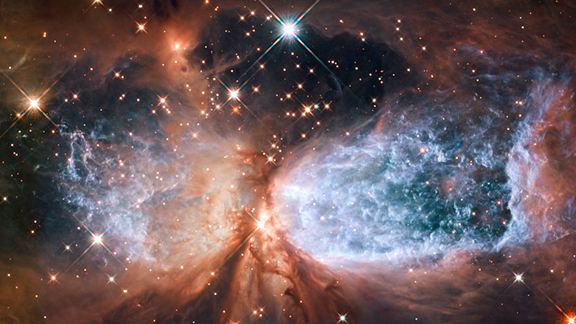
Now gravity attracts
Anything with mass
Like clouds, of dust and gas
That shrink, until at last
Getting denser under pressure
Raise the temperature
Great engines ignite
Nuclear fusion makes bright
The dark night
Let there be light!
Anything with mass
Like clouds, of dust and gas
That shrink, until at last
Getting denser under pressure
Raise the temperature
Great engines ignite
Nuclear fusion makes bright
The dark night
Let there be light!
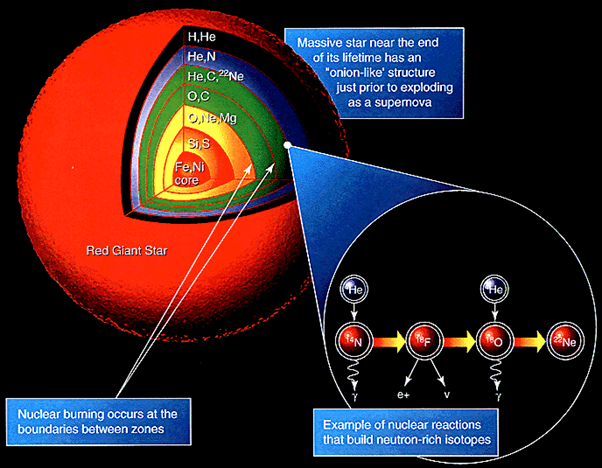
First hydrogen to helium
Then boron and carbon,
Nitrogen and oxygen,
And on and on…
The ancient stable
Of the periodic table
Everything you touch
Everything you own
Everything in you
If you ask where it begun
It was in the heart
Of a long dead sun
Then boron and carbon,
Nitrogen and oxygen,
And on and on…
The ancient stable
Of the periodic table
Everything you touch
Everything you own
Everything in you
If you ask where it begun
It was in the heart
Of a long dead sun
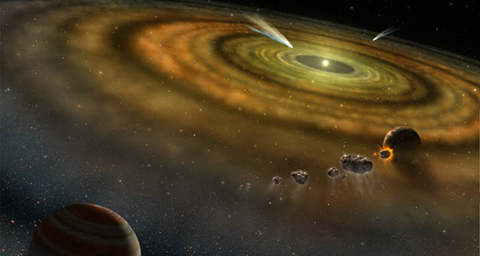
And when a supernova flashes
Scattering the ashes
The next generation of stars
Can have planets, like Mars
And with the perfect size and distance
- The Goldilocks Conditions -
Maybe there'd be water, for an instant…
Scattering the ashes
The next generation of stars
Can have planets, like Mars
And with the perfect size and distance
- The Goldilocks Conditions -
Maybe there'd be water, for an instant…
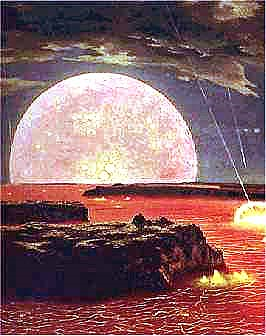


And so it came to be
That on one of these,
Amid the primal seas
A dash of energy
Linked C-H-N-O-S and P
Making:
Amino acids, RNA, DNA
The base of everything alive today
That on one of these,
Amid the primal seas
A dash of energy
Linked C-H-N-O-S and P
Making:
Amino acids, RNA, DNA
The base of everything alive today
'Dash' evokes lightning, and amino acids have indeed been created in laboratory conditions by passing electrical current through a 'primordial soup' of water, methane, ammonia and hydrogen as early as in 1953 (the Miller-Urey experiment).
However, latest thinking is that life originated at thermal vents on the ocean floor. The most confident exposition I have read, by Nick Lane, is that life's origin was at mid-ocean alkali vents (as opposed to central-ocean ridge acidic vents) - Nick Lane, Life Ascending: The Ten Great Inventions of Evolution (2009).
However, latest thinking is that life originated at thermal vents on the ocean floor. The most confident exposition I have read, by Nick Lane, is that life's origin was at mid-ocean alkali vents (as opposed to central-ocean ridge acidic vents) - Nick Lane, Life Ascending: The Ten Great Inventions of Evolution (2009).
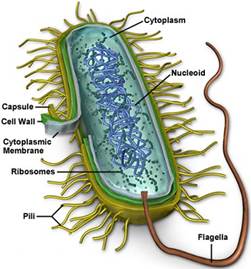
Trapped in a membrane
Forming long chains
Information store
And self-replicator
Mutate, replicate:
Innovations can accumulate
At a rate that fascinates
Forming long chains
Information store
And self-replicator
Mutate, replicate:
Innovations can accumulate
At a rate that fascinates

Diversification
Follows descent with modification
And non-random elimination
Of all but the best adapted
I just rapped that
'Descent with modification' was a phrase used by Charles Darwin in The Origin of the Species (1859), along with 'natural selection' to describe what was later termed 'evolution'.
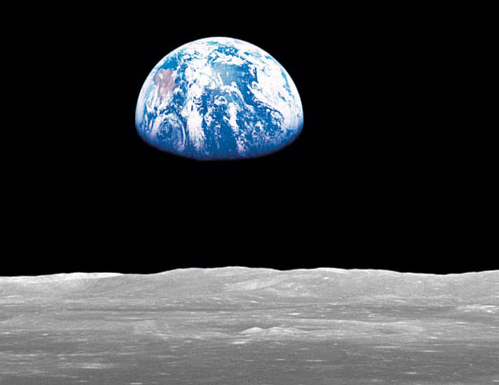
Producers and consumers
Symbiotic communities
Tectonics cycling minerals
With life building chemicals,
Forming
Mechanisms of feedback,
A global thermostat
That began to stabilise
What's in the seas and skies
And gave rise
To the blue marble that we marvel at
Lovelock called it Gaia,
These rhymes are on fire!
Symbiotic communities
Tectonics cycling minerals
With life building chemicals,
Forming
Mechanisms of feedback,
A global thermostat
That began to stabilise
What's in the seas and skies
And gave rise
To the blue marble that we marvel at
Lovelock called it Gaia,
These rhymes are on fire!
Geerat Vermeij, Nature: An Economic History (2004) is a fantastic analysis of economic forces in natural history. Beyond the line 'Producers and consumers' here, and another reference below, I unfortunately did not have enough space to present Vermeij's many rich ideas any further, but would highly recommend this book.
See note about Lynn Margulis and symbiosis in the next verse.
James Lovelock is a famous scientist who first postulated the Gaia Hypothesis (now Gaia Theory) in 1965; Lynn Margulis helped develop it in the 1970s. Gaia Theory states that interacting biological, chemical and physical processes formed multiple, linked feedback loops which stabilise the contents and temperatures of the atmosphere and oceans at levels conducive to the existence of life. Such a phenomenon is known as homeostasis and is a common regulator in biological life, e.g. in cells or blood; for this reason, Gaia is said to resemble an organism. Discovering Gaia Theory c. 2004-5 was a mind-altering experience for me.
To give one example of how Gaia's mechanisms work, bacteria accelerate rock-weathering, which takes CO2 out of the atmosphere to form mineral carbonates, causing cooling. But bacteria metabolise more rapidly at higher temperatures, hence the feedback. This and other mechanisms have helped keep temperature in the stable range we are familiar with today, while the sun has increased its output c. 40% in 4 billion years, which 'should have' caused a c. 100°C rise in temperature. Similarly, in the oceans, organisms which build shells grow more rapidly at higher salt levels, lowering sea salt levels (and subsequently decreasing their own growth rates). Sea salt levels are c. 4%; Lovelock estimated that rivers' delivery of salts would saturate the oceans at c. 20% (far too saline for most life to exist) in only 80 million years.
The Gaia Hypothesis was originally rejected as anthropomorphic and teleological; the authors admit that it was wrong in its initial formation, but subsequent revisions have been more widely accepted. Most significantly, Gaia Theory has spawned entire fields of science which are in good health today, such as Earth Systems Science, Geophysics, etc. Criticism remains (most notably from Richard Dawkins), but seems misguided to me; when I first read Gaia: A New Look at Life on Earth (1979), I thought Lovelock was explicitly clear that the concept of Gaia as an organism is just an analogy.
At the time of writing, James Lovelock is 94; he is the only living author directly mentioned in the Rap History of the World. For me there are interesting parallel between his career and that of William H. McNeill writing about human history (and also still going strong at 95): both attempted novel, macro-level approaches to their fields which identified global, enduring patterns with outstanding success from the 1960s onwards, while it took mainstream academia several decades (or more) to begin to accept and integrate their ideas.
To give one example of how Gaia's mechanisms work, bacteria accelerate rock-weathering, which takes CO2 out of the atmosphere to form mineral carbonates, causing cooling. But bacteria metabolise more rapidly at higher temperatures, hence the feedback. This and other mechanisms have helped keep temperature in the stable range we are familiar with today, while the sun has increased its output c. 40% in 4 billion years, which 'should have' caused a c. 100°C rise in temperature. Similarly, in the oceans, organisms which build shells grow more rapidly at higher salt levels, lowering sea salt levels (and subsequently decreasing their own growth rates). Sea salt levels are c. 4%; Lovelock estimated that rivers' delivery of salts would saturate the oceans at c. 20% (far too saline for most life to exist) in only 80 million years.
The Gaia Hypothesis was originally rejected as anthropomorphic and teleological; the authors admit that it was wrong in its initial formation, but subsequent revisions have been more widely accepted. Most significantly, Gaia Theory has spawned entire fields of science which are in good health today, such as Earth Systems Science, Geophysics, etc. Criticism remains (most notably from Richard Dawkins), but seems misguided to me; when I first read Gaia: A New Look at Life on Earth (1979), I thought Lovelock was explicitly clear that the concept of Gaia as an organism is just an analogy.
At the time of writing, James Lovelock is 94; he is the only living author directly mentioned in the Rap History of the World. For me there are interesting parallel between his career and that of William H. McNeill writing about human history (and also still going strong at 95): both attempted novel, macro-level approaches to their fields which identified global, enduring patterns with outstanding success from the 1960s onwards, while it took mainstream academia several decades (or more) to begin to accept and integrate their ideas.
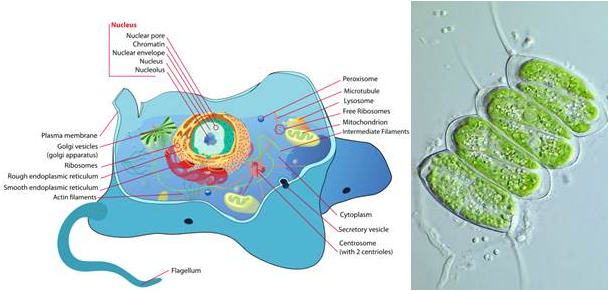
3 billion years
Of the single cell
They'd done well
But life went further:
When bacterial merger
Made the eukaryote
Of historical note
Horizons opened far
We're multi-cellular
Of the single cell
They'd done well
But life went further:
When bacterial merger
Made the eukaryote
Of historical note
Horizons opened far
We're multi-cellular
The eukaryotic cell is a much larger and more complex cell than a bacteria; all macroscopic, multi-cellular life is eukaryotic. Lynn Margulis first proposed bacterial merger as the origin of the eukaryote in 1966; eventually that theory was accepted as fact by biologists. She has written many works on this and other topics; the first I read was Symbiotic Planet: a New Look At Evolution (1998), which is engagingly written and raises powerful questions about the distinction between community and individual, and Acquiring Genomes (2002).
The history of biological evolution has had many excellent treatments; two I have enjoyed were Richard Fortey's Life: An Unauthorised Biography (1997) and Richard Dawkins' The Ancestor's Tale (2004).

About half a billion years ago…
Deep in the oceans
The Cambrian explosion
Set in motion
A great radiation
Of prey and predation
Things to help swim
Like fins and branching limbs
Teeth, claws, grasping jaws
Sensory perception
Evasion and deception
The arms race continues at pace
Forever. For ever?
For ever ever.
The Cambrian explosion
Set in motion
A great radiation
Of prey and predation
Things to help swim
Like fins and branching limbs
Teeth, claws, grasping jaws
Sensory perception
Evasion and deception
The arms race continues at pace
Forever. For ever?
For ever ever.
Simon Conway Morris' The Crucible of Creation (1998) is an enthusiastic survey of the middle-Cambrian world and the forces driving its evolution; we know it mainly from fossils discovered in the 'Burgess Shale' rocks in the Canadian Rockies, c. 500 million years old. The animals which dominated Cambrian ecosystems are very different in form to those which succeeded them in the fossil record.
Lately, the Chengjiang fauna from China, some 10 million years younger than the Burgess Shale, has risen in prominence.
Lately, the Chengjiang fauna from China, some 10 million years younger than the Burgess Shale, has risen in prominence.
Geerat Vermeij's Nature: An Economic History (2004), mentioned above, has, amongst lots of rich content, a particularly thorough section analysing techniques of resistance to predation.
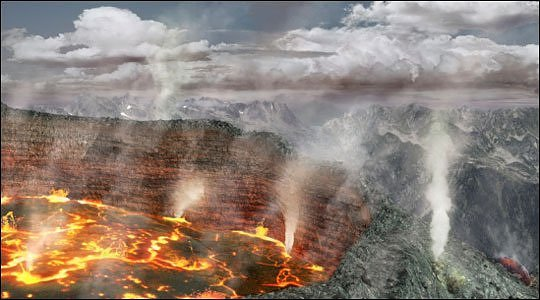
Life passed with distinction
Five mega-extinctions
From without or within
The atmosphere is thin
Volcanic eruptions
Asteroid interruptions
Once or twice
Earth's been covered in ice
But after adversity
Comes fresh diversity
Other branches of the tree
Leading the recovery
Five mega-extinctions
From without or within
The atmosphere is thin
Volcanic eruptions
Asteroid interruptions
Once or twice
Earth's been covered in ice
But after adversity
Comes fresh diversity
Other branches of the tree
Leading the recovery
Tony Hallam's Catastrophes and Lesser Calamaties (2004) is a very concise survey of mass extinction episodes throughout biological history, and the available evidence in search of their causes. Multiple factors combined during these events and it is difficult to pick them apart in causal analysis; some of them are still subject to debate. Apart from anything else, these events were dramas of environmental change and cataclysm far beyond our imagination.
Doug Macdougall's Frozen Earth: The Once and Future Story of Ice Ages (2004) does what its title suggests well. The last 'Snowball Earth' event occurred c. 650 million years ago (mya), 'not long' before the first macroscopic soft-bodied fossils (c. 580 mya), and the 'Cambrian explosion' described above beginning c. 540 mya. It is possible, although not certain, that the Earth was completely covered in ice, and it may have happened 2 or even 3 times, or these may have been lesser (but still major) glaciations. There have of course been lots of other glaciations; these and the techniques and evidence used to study them are well-presented in Frozen Earth.

And so it came to be
That creatures of the sea
Ventured onto land
And would quickly expand
From amphibians to simians
And lots between we've seen
Colossal among the fossils
Are dinosaurs
Once ruled the world
Today they survive
Only as birds
While mammals rised late
To dominate
That creatures of the sea
Ventured onto land
And would quickly expand
From amphibians to simians
And lots between we've seen
Colossal among the fossils
Are dinosaurs
Once ruled the world
Today they survive
Only as birds
While mammals rised late
To dominate
Invertebrate animals first migrated onto land c. 450-500 mya, and verterbrates c. 350-300 mya.
We've seen the creation
From random generation
Of new entities, even whole environments
Driven by selection
Against the direction
Of entropy
So it grows: life's magic tree.
But is the point mutation
The Lord of all Creation
What about
Epigenetic methylation
Chromosome hybrids
Bacterial plasmids
A lot of what’s inside us
Got here by virus
So maybe part of the answer
Lies in horizontal gene transfer
And what’s this I’m hearing
Genomes rearranging
Is it natural and normal:
Genetic engineering?
Note the propensity
To increase complexity,
And energy-flow density:
Evolution can operate
On systems small and great
Particles, chemicals
Cells, plants and animals
The trends transcend
Different realms
Will they hold true
For human worlds too?
From random generation
Of new entities, even whole environments
Driven by selection
Against the direction
Of entropy
So it grows: life's magic tree.
But is the point mutation
The Lord of all Creation
What about
Epigenetic methylation
Chromosome hybrids
Bacterial plasmids
A lot of what’s inside us
Got here by virus
So maybe part of the answer
Lies in horizontal gene transfer
And what’s this I’m hearing
Genomes rearranging
Is it natural and normal:
Genetic engineering?
Note the propensity
To increase complexity,
And energy-flow density:
Evolution can operate
On systems small and great
Particles, chemicals
Cells, plants and animals
The trends transcend
Different realms
Will they hold true
For human worlds too?
This is the central argument of Eric Chaisson's Cosmic Evolution (2001): that the rate of flow of energy per unit mass has tended to increase as new types of entity have evolved, which is closely linked to increasing complexity. The genius of this is Chaisson's success in comparing everything from galaxies to bacteria to jet engines using the same metric (with units of erg/s/g; an erg is a unit of energy equivalent to 10-7 joules, or 100 nano-joules).
Chaisson has another magnum opus which covers the same material in a more qualitative way: Epic of Evolution (2003) considers the different realms of evolution - particles, galaxies, stars, planets, chemicals, biological life, human societies, culture and technology - and is a slightly easier read than Cosmic Evolution.
Chaisson's own website gives an excellent concise introduction, including videos.
Chaisson has another magnum opus which covers the same material in a more qualitative way: Epic of Evolution (2003) considers the different realms of evolution - particles, galaxies, stars, planets, chemicals, biological life, human societies, culture and technology - and is a slightly easier read than Cosmic Evolution.
Chaisson's own website gives an excellent concise introduction, including videos.
Leonid Grinin, Andrey Korotayev, et al. edit a series of almanacs entitled Evolution, which began in 2011, discussing themes in macroevolution, i.e. a level of abstraction beyond biological life, considering evolution from the perspective of the universe, applying to physical, chemical, biological and social realms.
The second edition sub-titled A Big History Perspective features articles from Christian and Chaisson on Big History and Cosmic Evolution respectively. This edition is available for free online here, or you can order a printed version by contacting the Russian publisher (Uchitel) directly.
The second edition sub-titled A Big History Perspective features articles from Christian and Chaisson on Big History and Cosmic Evolution respectively. This edition is available for free online here, or you can order a printed version by contacting the Russian publisher (Uchitel) directly.
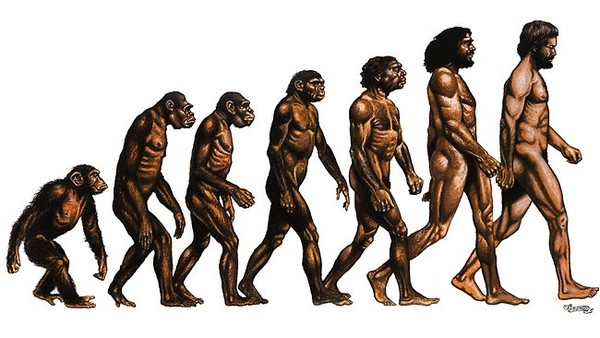
So how did a Great Ape
Lead to people who jape?
Swinging from jungle to concrete jungle
Playing bunga bunga on the drums
Tapping keyboards with our thumbs:
From where, did Homo Sapiens come?
Lead to people who jape?
Swinging from jungle to concrete jungle
Playing bunga bunga on the drums
Tapping keyboards with our thumbs:
From where, did Homo Sapiens come?
There are many books on human evolution; Ian Tattersall's Becoming Human (1998) is very good, and David Christian's Maps of Time (2004) provides a concise summary. However, as this is a rapidly-changing field, the reader may wish to look up something more recent.
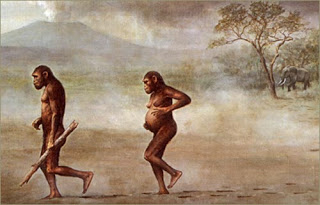
So we had chimpanzees, up trees
Or walking on hands and knees
But great mountains rised
The land dried, forests broke
Grasslands encroached
So we stood up to see
And, hands freed,
Picked up sticks and rocks
And made things we need
Or walking on hands and knees
But great mountains rised
The land dried, forests broke
Grasslands encroached
So we stood up to see
And, hands freed,
Picked up sticks and rocks
And made things we need
An important point of information here is that Homo Sapiens is not a descendant of chimpanzees. We shared a common ancestor with chimpanzees c. 5-7 million years ago, although it would have looked more like a chimpanzee than us.
What follows in this verse is the classic model of human evolution.
What follows in this verse is the classic model of human evolution.
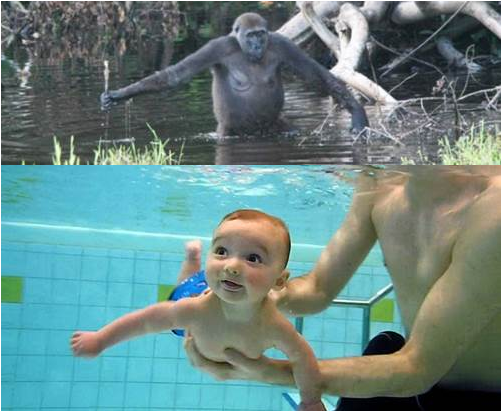
But before I proceed
And you learn by rote
We should note
Another approach
That we diverged on an ancient beach
Diving to reach
Seafood and all that's good
On the shores of yore
Do scientists agree? Maybe. Nearly.
Check it out,
The Aquatic Ape Theory.
And you learn by rote
We should note
Another approach
That we diverged on an ancient beach
Diving to reach
Seafood and all that's good
On the shores of yore
Do scientists agree? Maybe. Nearly.
Check it out,
The Aquatic Ape Theory.
Aquatic Ape Theory is a long-neglected theory proposed by Alistair Hardy in 1960, then championed by Elaine Morgan for decades (e.g. in The Aquatic Ape Hypothesis (1997)), with most anthropologists largely indifferent or dismissive. The topic was the subject of a scientific conference in London in May 2013, indicating that mainstream science might finally be considering it.
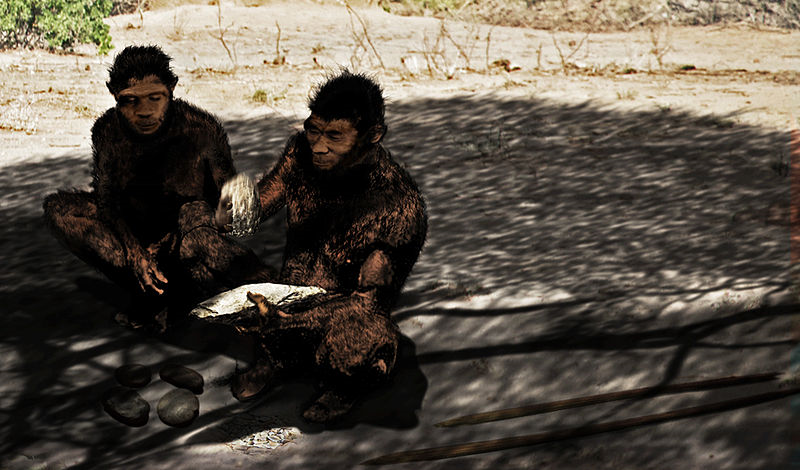
Whatever the divergence
Soon came the emergence
Of long-lost cousins, among them
Australopithecus and Homo Erectus
Now Homo Habilis got his hands on this:
The use of tools
Learning, like in school
But where selection rules
Scrape meat from the bone
Don't dine alone
Soon came the emergence
Of long-lost cousins, among them
Australopithecus and Homo Erectus
Now Homo Habilis got his hands on this:
The use of tools
Learning, like in school
But where selection rules
Scrape meat from the bone
Don't dine alone
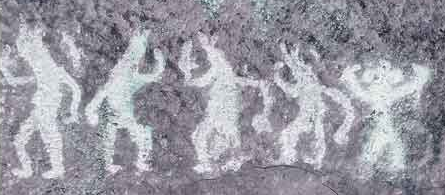
And I haven't even mentioned
Sexual selection
Trying to get a mate's attention
If you like this song,
Have a dance and sing along
That's how we bond
Sexual selection
Trying to get a mate's attention
If you like this song,
Have a dance and sing along
That's how we bond
Sexual selection is an important force in most of biological evolution: organisms have to survive and reproduce, and to do so they have to choose and be chosen by a mate (or mates). In The Mating Mind (2001), Geoffrey Miller explores sexual selection in general and its impact on the evolution of human intelligence and creativity. Matt Ridley The Red Queen: Sex and the Evolution of Human Nature (1994) is older but also very good.
Tim Birkhead's Promiscuity (2000) surveys the astonishing variety of mating strategies, and their impacts on social and family structures throughout the animal kingdom.
Tim Birkhead's Promiscuity (2000) surveys the astonishing variety of mating strategies, and their impacts on social and family structures throughout the animal kingdom.
Stephen Mithen argues that language evolved in hominids from musical origins in The Singing Neanderthals (2006). William H. McNeill identified communal dance as an instrument of social bonding in human evolution, tendencies which have been utilised by military leaders in the form of drill to form individuals into disciplined, cohesive armies - Keeping Together In Time: Dance and Drill in Human History (1995).

And as our groups grow
It gets harder to know
Who knows who,
Who's high and who's low,
Who I should know…
It's getting so complex
I need more neocortex
It gets harder to know
Who knows who,
Who's high and who's low,
Who I should know…
It's getting so complex
I need more neocortex
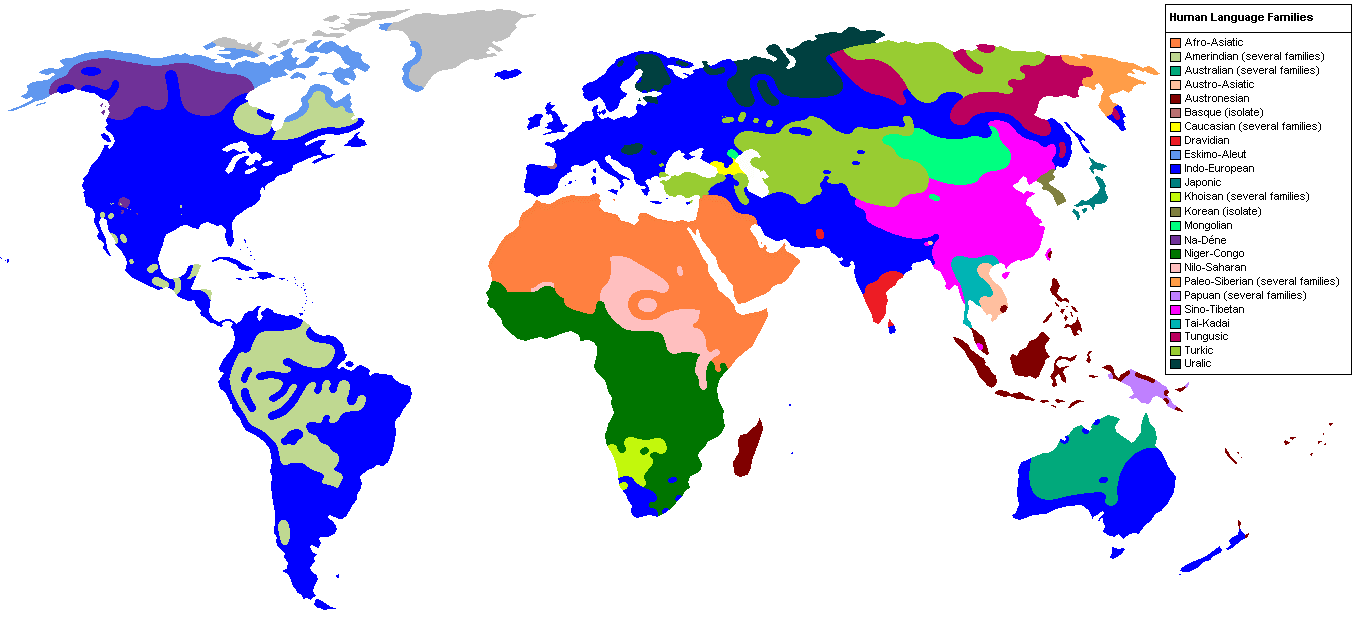
Soon the grunts you heard
Became nouns and verbs
String together words
With the art of language
We can manage
Many more techniques
Shared through speech
I can hear new pages turning:
The rise and thrive
Of collective learning
Became nouns and verbs
String together words
With the art of language
We can manage
Many more techniques
Shared through speech
I can hear new pages turning:
The rise and thrive
Of collective learning

And what this will mean
For genes
Remains to be seen…
For genes
Remains to be seen…
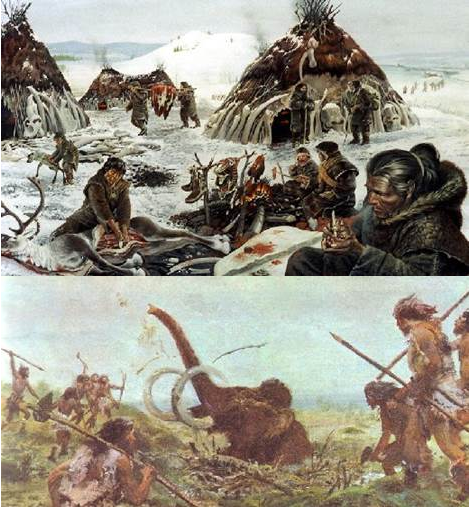
But in the meantime,
Unfazed by Ice Ages
We wandered and wandered
Hunted and gathered
Learnt to make a living
In every climate
On every continent
In every environment
Much to the detriment
Of large animals
That we'd find, and eradicated
By now, humans already dominated
What would become of them?
What would be their fate?
Unfazed by Ice Ages
We wandered and wandered
Hunted and gathered
Learnt to make a living
In every climate
On every continent
In every environment
Much to the detriment
Of large animals
That we'd find, and eradicated
By now, humans already dominated
What would become of them?
What would be their fate?
Stephen Mithen's After the Ice: A Global Human History 20,000-5,000 B.C. (1999) is an entertaining survey of the variety and ingenuity of Neolithic life across the globe written from the first-person perspective of a time-traveller. This is probably as good a book as any to understand ancient hunter-gatherer lifestyles; it also considers humans' first experiments with agriculture and settlements of permanent buildings, which we will meet in Act II.
From as early as c. 40,000 B.C. down to the present, humans have caused the extinction of many large animals (megafauna), some that we are familiar with such as the dodo or woolly mammoth, some less famous such as sabre-toothed marsupial lions in Australia or pygmy elephants on Crete. The importance of human agency in these megafauna extinctions has been contested, with climate changes associated with the end of the Ice Age also blamed. However, current consensus appears to hold that the timing and location of extinction events correlate closely with evidence of human presence and not with climate changes.
Jared Diamond argued this point forcefully in The Rise and Fall of the Third Chimpanzee: How Our Animal Heritage Effects the Way We Live (1991): the recently extinct species had survived at least 3 million years of similar climactic fluctuations associated with the latest regime of glacial-interglacial cycles which Earth has experienced since the closing of the Panama isthmus. Further, species whose territories did not overlap with humans during the latter's evolution would have failed to evolve an extinctive fear of humans (which even African lions have today). This certainly facilitated extinctions in historical times, such as the dodo and other flightless birds of New Zealand, Polynesia and Indian Ocean islands. Personally I think we killed off the biggest animals and the most dangerous (to us), except in hot areas of Africa and Asia where disease may have prevented us from sustaining adequately large populations in the animals' habitats.
Jared Diamond argued this point forcefully in The Rise and Fall of the Third Chimpanzee: How Our Animal Heritage Effects the Way We Live (1991): the recently extinct species had survived at least 3 million years of similar climactic fluctuations associated with the latest regime of glacial-interglacial cycles which Earth has experienced since the closing of the Panama isthmus. Further, species whose territories did not overlap with humans during the latter's evolution would have failed to evolve an extinctive fear of humans (which even African lions have today). This certainly facilitated extinctions in historical times, such as the dodo and other flightless birds of New Zealand, Polynesia and Indian Ocean islands. Personally I think we killed off the biggest animals and the most dangerous (to us), except in hot areas of Africa and Asia where disease may have prevented us from sustaining adequately large populations in the animals' habitats.
--The end of Act I--
Act II - Themes in the History of Civilizations before the Industrial Revolution / Modern Era
Millions of years of natural selection
What's for breakfast
Too many choices to mention
So we'd pick the best ones
Planting seeds in our gardens
Fruits ripen, nuts harden
The human hand guiding nature
A new accelerator
What's for breakfast
Too many choices to mention
So we'd pick the best ones
Planting seeds in our gardens
Fruits ripen, nuts harden
The human hand guiding nature
A new accelerator
Stephen Mithen, After the Ice (1999), mentioned in Act I, is good on humans' experiments with small-scale plant growing long before they became dependent on domestication for sustenance.
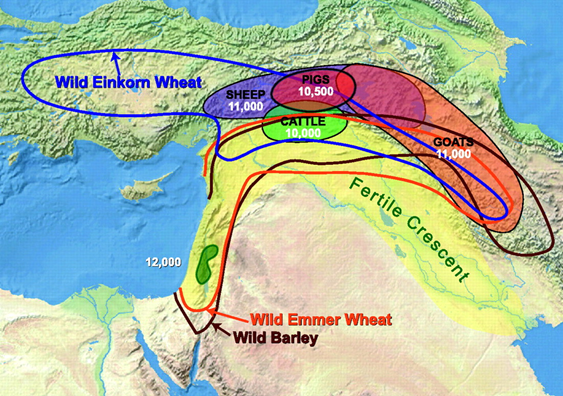
At a continental crossroads in the Middle East
We found wheat and tame sheep
So we sowed and we reaped
Irrigate to hydrate and create
More farmland out of sand
Let's expand!
More and more people in the land
Is it getting out of hand?
We found wheat and tame sheep
So we sowed and we reaped
Irrigate to hydrate and create
More farmland out of sand
Let's expand!
More and more people in the land
Is it getting out of hand?
David Christian's Maps of Time: An Introduction to Big History (2004) argues that agriculture and towns first occurred in what is today southern Iraq because it was a crossroads of human trade routes as well of plant and animal species, where various valuable innovations, both human and biological, could accumulate.

When we plant seeds
And pluck weeds
It's something earned
But it's also something learned
New skillz, knowledge
In the global college
Not static but diffusing
People choosing new things
And moving
Where terrain suits
Travel and trade routes
Can re-distribute
The gains:
Like metals, silks, grains
And all the contents of brains and veins
Interaction and exchange
Drive change with limitless range
Step forward to the stage
The players of every age
Contacts are the threads that spread
To form the Human Web
And pluck weeds
It's something earned
But it's also something learned
New skillz, knowledge
In the global college
Not static but diffusing
People choosing new things
And moving
Where terrain suits
Travel and trade routes
Can re-distribute
The gains:
Like metals, silks, grains
And all the contents of brains and veins
Interaction and exchange
Drive change with limitless range
Step forward to the stage
The players of every age
Contacts are the threads that spread
To form the Human Web
Jared Diamond Guns, Germs and Steel (1997) observes that diffusion was easier across Eurasia than in Africa or the Americas because the 'principal axis' of Eurasia runs west-east, therefore plants and animals, both wild and domesticated, can spread more easily over very large distances in similar climate and environmental conditions. The north-south axes of Africa and especially the Americas permitted less mixing of potentially productive species, and slowed the spread of agriculture and domestication from their sources of origin.
One of the general observations of William H. McNeill in his first magnum opus, The Rise of the West: A History of the Human Community (1963) was that the interaction and borrowing of ideas, techniques, diseases, etc. was a driver of major, perhaps primary, importance in Human history. This was a significant departure from previous attempts to write world history, which tended to focus on the peculiarities of civilizations (and the 'races' that comprised them) to explain their divergent historical paths. So, McNeill's first great contribution to human knowledge was to identify a causal factor which not only offers much greater explanatory power than previous (and many subsequent) attempts to analyse the human past (and present), but also does so in a way that highlights the shared, community aspects of the Human adventure on Earth, which are otherwise easily overlooked. McNeill discusses his initial inspiration here.
Forty years later, McNeill co-authored The Human Web (2003) with his son J.R. McNeill; this work takes McNeill's earlier ideas to their logical conclusion: if interactions are what drives change in the human world, then arguably the central object of study in human history should be the integrated networks, or web, formed by those interactions and the connections that allow them to happen. Note how this idea becomes more powerful in the context of David Christian's concept of gravity forming regions in time and space where interactions become particularly intense and frequent. (Addendum: McNeill himself made a comment to this effect in his 1994 essay, The Changing Shape of World History, which can be read here.)
Forty years later, McNeill co-authored The Human Web (2003) with his son J.R. McNeill; this work takes McNeill's earlier ideas to their logical conclusion: if interactions are what drives change in the human world, then arguably the central object of study in human history should be the integrated networks, or web, formed by those interactions and the connections that allow them to happen. Note how this idea becomes more powerful in the context of David Christian's concept of gravity forming regions in time and space where interactions become particularly intense and frequent. (Addendum: McNeill himself made a comment to this effect in his 1994 essay, The Changing Shape of World History, which can be read here.)
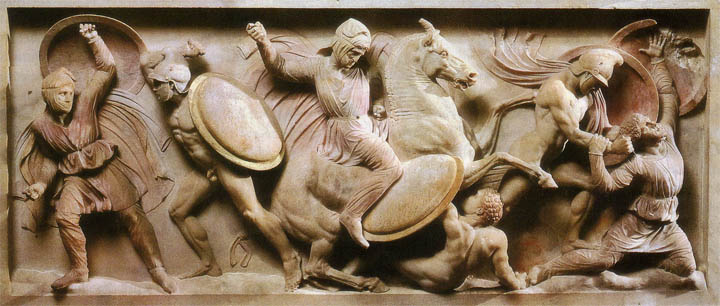
So we built walls, market stalls
Invented deities to stay at ease
They'll help if the rains cease
But as soon as we'd make it
Someone wants to take it
Had to pay our mortal lords
For protection from their swords
Invented deities to stay at ease
They'll help if the rains cease
But as soon as we'd make it
Someone wants to take it
Had to pay our mortal lords
For protection from their swords
Goudsblom, Jones and Mennell co-authored the short work, Human History and Social Process (1989) which contains thought-provoking approaches to various questions that are not normally considered by mainstream historians, such as how priestly and warrior elites emerged, followed by states. I think it was here that the authors argued that states began as protection rackets (not dissimilar to the modern Mafia); I may be wrong as I read this a long time ago at university. (Addendum: I think actually I saw the protection racket origin of the state theory in a book by Charles Tilly, possibly Coercion, Capital and European States, AD 990-1992.)
Uchitel, the publishers of the Evolution journal referenced in Act I, also have an issue entitled The Early State, Its Alternatives and Analogues (2004), by Grinin, Carneiro, Korotayev et al. (eds.); I have not read this yet but it looks fascinating and can be accessed here.
David Christian's Maps of Time (2004) points to the same Middle Eastern crossroads among which early agriculture emerged as fostering the appearance of the first towns and states.
Uchitel, the publishers of the Evolution journal referenced in Act I, also have an issue entitled The Early State, Its Alternatives and Analogues (2004), by Grinin, Carneiro, Korotayev et al. (eds.); I have not read this yet but it looks fascinating and can be accessed here.
David Christian's Maps of Time (2004) points to the same Middle Eastern crossroads among which early agriculture emerged as fostering the appearance of the first towns and states.

Next we had towns
Men wearing crowns
Handing down
Laws and order
Warriors on the border
Scribes to keep tabs
On what's owned
And who owes
Priests to pray and feast
All supported by the beasts
Of burden
Taking what I'm earning
Men wearing crowns
Handing down
Laws and order
Warriors on the border
Scribes to keep tabs
On what's owned
And who owes
Priests to pray and feast
All supported by the beasts
Of burden
Taking what I'm earning
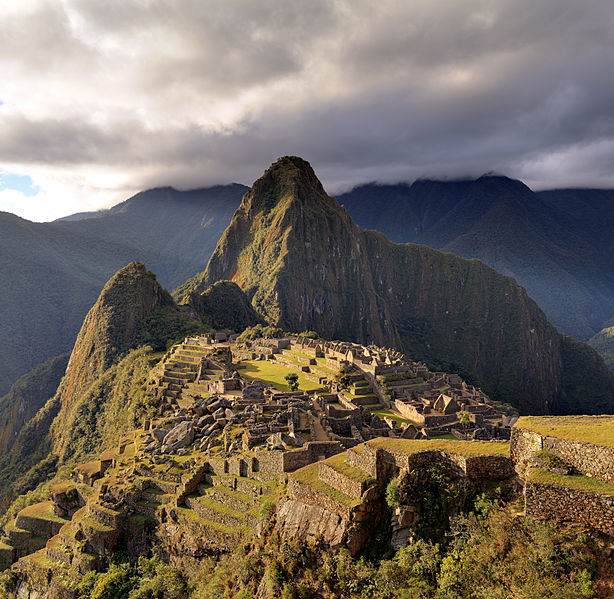
Ruler after ruler
It began in Ancient Sumer
They'd fall and they rised
Civilizations, and empires
But the basics were the same
For all the Big Names
From Babylon to Sargon
The Hittites are far gone
Shang, Zhou
Qin, Han
Tang, Song,
Yuan, Ming, Qing
Sasanids, Safavids,
Ummayads and Fatimids
Mamluks, Ottomans
Olmecs, Aztecs, Chan Chan to Incas
The basics were the same
For all the Big Names
It began in Ancient Sumer
They'd fall and they rised
Civilizations, and empires
But the basics were the same
For all the Big Names
From Babylon to Sargon
The Hittites are far gone
Shang, Zhou
Qin, Han
Tang, Song,
Yuan, Ming, Qing
Sasanids, Safavids,
Ummayads and Fatimids
Mamluks, Ottomans
Olmecs, Aztecs, Chan Chan to Incas
The basics were the same
For all the Big Names
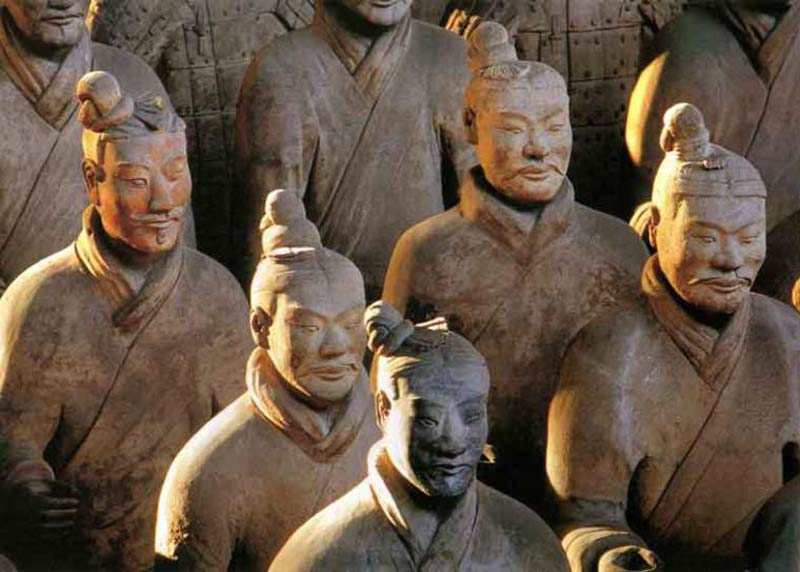
That said,
We might pause to wonder at
Their intellectual achievements
Technical developments
Theories of the elements
Pyramids on the Nile
Artistic styles
Travelled over
Miles and miles
Canals and compass
Paper and the press
Metaphysical systems
Helped manage duress…
We might pause to wonder at
Their intellectual achievements
Technical developments
Theories of the elements
Pyramids on the Nile
Artistic styles
Travelled over
Miles and miles
Canals and compass
Paper and the press
Metaphysical systems
Helped manage duress…
William H. McNeill's The Rise of the West (1963), mentioned above, is probably still the best introduction today on the evolution of art, religion, philosophy and culture in general in human societies. Karen Armstrong's The Great Transformations (2006) on the gradual divergence and evolution of numerous scripture-based religions from simpler Indo-European origins, particularly during the 'Axial Age', is very thorough. Armstrong is more interested in the spiritual aspects of religion than why or how they evolved but there is much detailed content that permits consideration of evolutionary processes. The progression of Yahweh, for example, from a local, ethno-national deity amongst a host of rivals, to the strongest of the gods, to the only god is illuminative.
On a side note, Armstrong's central point is that human enlightenment and spiritual ascendance is achieved by abandoning the ego and all selfish desire and devoting oneself to the service of others, and (crucially) that this has been discovered independently by all the major world religions; this knowledge is a basis for an ethical world universalism.
On a side note, Armstrong's central point is that human enlightenment and spiritual ascendance is achieved by abandoning the ego and all selfish desire and devoting oneself to the service of others, and (crucially) that this has been discovered independently by all the major world religions; this knowledge is a basis for an ethical world universalism.
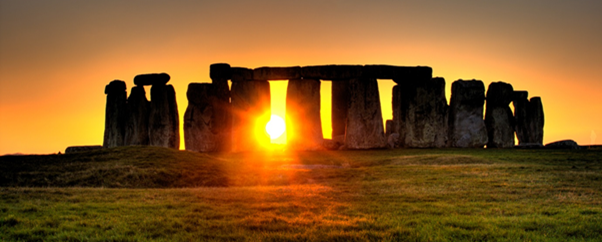
Being self-aware
We had to stare
At the brutal truth
Of our own mortality
So we'd turn to
Spirituality
Soul-body duality
Helps cope with reality
We had to stare
At the brutal truth
Of our own mortality
So we'd turn to
Spirituality
Soul-body duality
Helps cope with reality
This is the first mention of spirituality or religion, but the reader should be aware this introduction really belongs in Act I - archaeological evidence suggesting some form of spiritual belief has been found all over the world as early as 50,000 years ago - ceremonial burial, artefacts, etc.
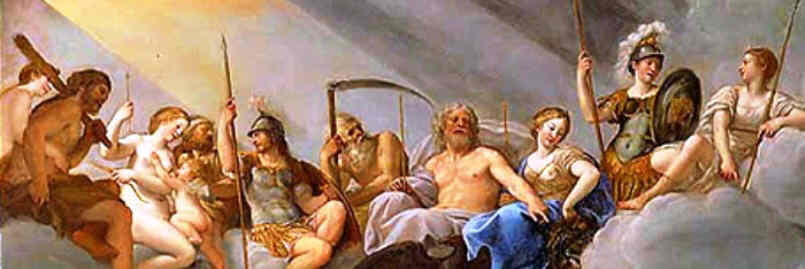
And so we got along
Worshipping our pantheons
Local families of gods
Would become obsolete
When new cultures meet
Worshipping our pantheons
Local families of gods
Would become obsolete
When new cultures meet
The arguments here about disruption to belief in the ancient, local pantheons as social horizons widened, particularly when conquered by foreigners, I first read I think in William H. McNeill's A World History (1967). Likewise for the observation that monotheistic belief arose and spread among scattered urban milieus of great Empires with mingled ethnic compositions and difficult, uncertain conditions of life.
A World History is a concise version of Rise of the West (1963), written to accompany the World History course McNeill taught at the University of Chicago. I discovered it by shelf-browsing a library as an undergraduate in 2001 and it became the start of my learning about World History.
A World History is a concise version of Rise of the West (1963), written to accompany the World History course McNeill taught at the University of Chicago. I discovered it by shelf-browsing a library as an undergraduate in 2001 and it became the start of my learning about World History.
Amid social dislocation
I yearn for holy salvation
More sophisticated systems
Of belief and superstition
Roots and branches
Schism and division
Competing monotheisms
Borrowing ideas and themes
Like bacteria sharing genes
Getting into bed with kings and queens
What does it all mean?
Religions… actually evolved
Now, there's a mystery solved!
I yearn for holy salvation
More sophisticated systems
Of belief and superstition
Roots and branches
Schism and division
Competing monotheisms
Borrowing ideas and themes
Like bacteria sharing genes
Getting into bed with kings and queens
What does it all mean?
Religions… actually evolved
Now, there's a mystery solved!
The ideas about religion evolving in a manner not dissimilar to natural selection in biology, and in particular the comparison with lateral gene transfer in bacteria, were I think my own when they first occurred to me, although I don't imagine they would be unusual now. Reading McNeill's discussion of the ancient Middle East in A World History (and later in The Human Web), I was struck by how different aspects of religions were shared among each other, and, following jealous competition, the amalgamations of the most suitable components dominated in the long run (jealousy, or intolerance, is of course an evolved trait of the surviving religions). See also Karen Armstrong's The Great Transformations (2006) mentioned above.
Christianity later transformed itself to facilitate fantastically successful partnerships with the Roman Empire and its successor states, which lasted almost to the present day. Christianity was most often introduced into/imposed on a kingdom by the ruler himself (perhaps after groundwork by missionaries), because it suited the crown's interests.
See also the final verse of Act II, which hints at the role of disease in the history of religion.
Christianity later transformed itself to facilitate fantastically successful partnerships with the Roman Empire and its successor states, which lasted almost to the present day. Christianity was most often introduced into/imposed on a kingdom by the ruler himself (perhaps after groundwork by missionaries), because it suited the crown's interests.
See also the final verse of Act II, which hints at the role of disease in the history of religion.
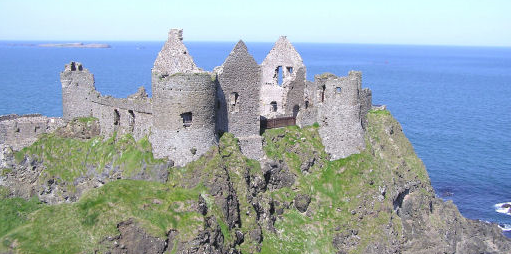
Back to our story:
The pursuit of power, and glory…
They'd come and they go,
Some fast and some slow:
But castles fall into the sea,
For every dynasty, eventually.
The pursuit of power, and glory…
They'd come and they go,
Some fast and some slow:
But castles fall into the sea,
For every dynasty, eventually.
These lines adapted from Jimi Hendrix, Castles Made of Sand (1967)
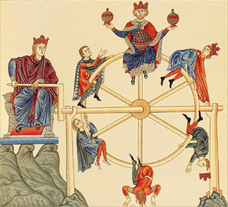
Horseback raiders,
Foreign invaders
Were just some of the reasons:
Failure of the seasons
Harvests less than pleasing
Hostile microbes
Fester in the lymph nodes
Plagues and pandemics
Or simple demographics…
Foreign invaders
Were just some of the reasons:
Failure of the seasons
Harvests less than pleasing
Hostile microbes
Fester in the lymph nodes
Plagues and pandemics
Or simple demographics…
…'Cause, when…
Population density
Reaches critical intensity
Put more land to the plow
That's how
We'd make do for now
Conquest adds to the harvest
As long as we're strongest
But there are
Limits of expansion
For village and mansion
Inheritance divided, disunited
Restless are the dispossessed
Social stress and less
Tax to bring
For lord and king
Desperate for revenues
They abuse
Civil war goes viral
Downward spiral
We lament and repent
But violence relents
Only when forces are spent
Population can begin to recover
From one cycle to another
Population density
Reaches critical intensity
Put more land to the plow
That's how
We'd make do for now
Conquest adds to the harvest
As long as we're strongest
But there are
Limits of expansion
For village and mansion
Inheritance divided, disunited
Restless are the dispossessed
Social stress and less
Tax to bring
For lord and king
Desperate for revenues
They abuse
Civil war goes viral
Downward spiral
We lament and repent
But violence relents
Only when forces are spent
Population can begin to recover
From one cycle to another
This section describes the major influence of demographic cycles in history, first made prominent by Jack Goldstone's analysis of their importance behind revolutions. Goldstone's ground-breaking work on this topic was titled Revolution and Rebellion in the Early Modern World (1991); a concise preview is available in his article East and West in the Seventeenth Century: Political Crises in Stuart England, Ottoman Turkey, and Ming China, published in Comparative Studies in Society and History, Vol. 30, No. 1 (1988).
Mainstream scholarship has been somewhat slow on the uptake of Goldstone's ideas, although authors such as David Hackett Fischer, The Great Wave (2006), and Gregory Clark, A Farewell to Alms (2008), have written interesting works on the demographic/price cycles and Malthusian forces. Goldstone's pioneering work was finally developed and extended by Turchin and Nefedov, most notably in Secular Cycles (2009) as well as in earlier, more technical works.Turchin and Nefedov expanded the analysis into new realms such as Russia post-1400 and the Roman Empire. They also elaborated the negative impact of conflict on agricultural output (e.g. peasants abandoning fields for the safety of towns), which exacerbated the problems which lead to conflict in the first place.
Peter Turchin also founded (in 2010) and edits the journal Cliodynamics (free online), which is the name he coined in 2003 for the type of historical study discussed here. He provides a concise and illuminating introduction to the concept here.
Mainstream scholarship has been somewhat slow on the uptake of Goldstone's ideas, although authors such as David Hackett Fischer, The Great Wave (2006), and Gregory Clark, A Farewell to Alms (2008), have written interesting works on the demographic/price cycles and Malthusian forces. Goldstone's pioneering work was finally developed and extended by Turchin and Nefedov, most notably in Secular Cycles (2009) as well as in earlier, more technical works.Turchin and Nefedov expanded the analysis into new realms such as Russia post-1400 and the Roman Empire. They also elaborated the negative impact of conflict on agricultural output (e.g. peasants abandoning fields for the safety of towns), which exacerbated the problems which lead to conflict in the first place.
Peter Turchin also founded (in 2010) and edits the journal Cliodynamics (free online), which is the name he coined in 2003 for the type of historical study discussed here. He provides a concise and illuminating introduction to the concept here.
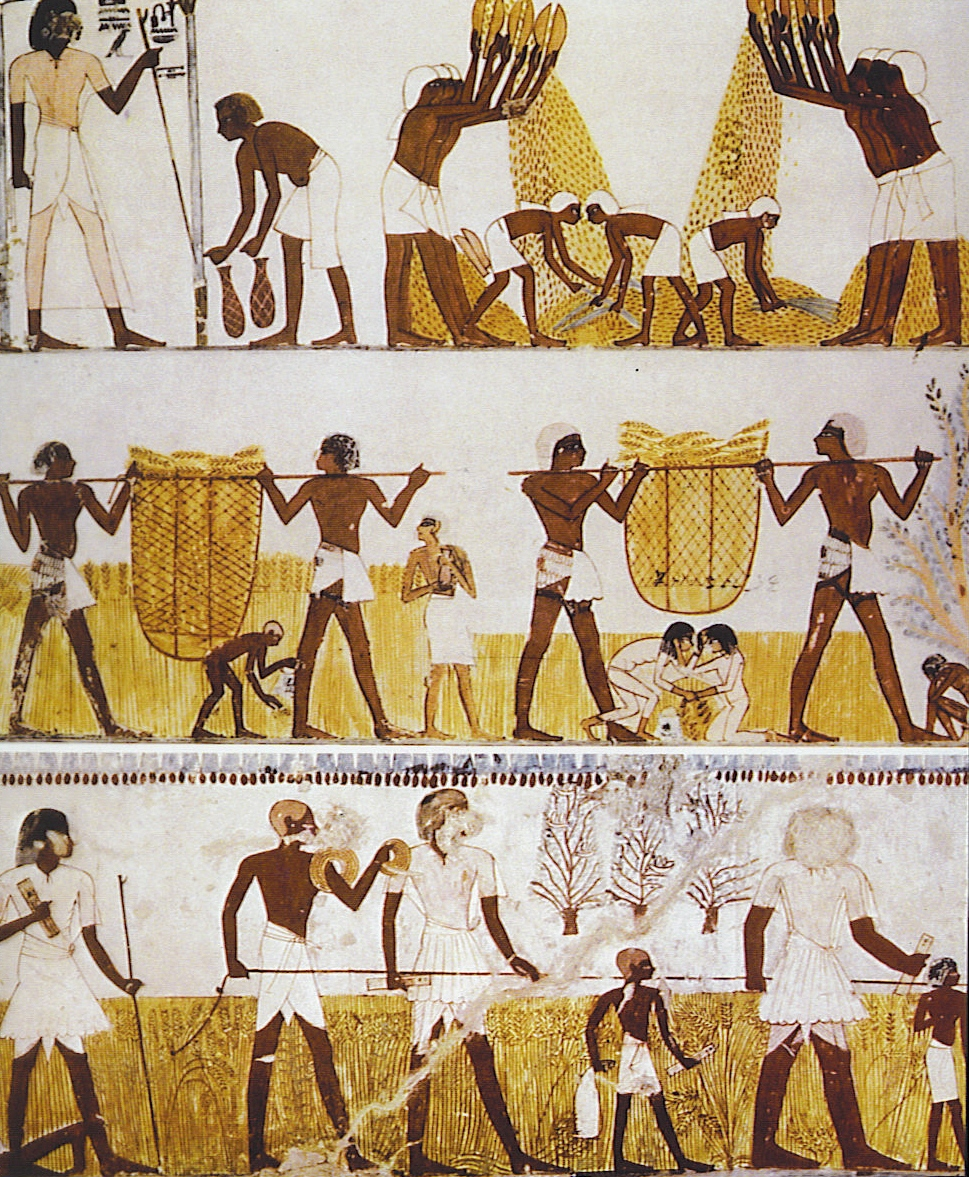
It might not be easy to see
But a civilized economy
Is an ecological entity
Cities living on the surplus
Sun and the soil
Plants grow, men toil
Chopping trees to clear fields,
Increase yields
Soil exposed to wind that blows
Like dust there it goes - oh oh!
Salination or dehydration
Can imperil a whole nation
But a civilized economy
Is an ecological entity
Cities living on the surplus
Sun and the soil
Plants grow, men toil
Chopping trees to clear fields,
Increase yields
Soil exposed to wind that blows
Like dust there it goes - oh oh!
Salination or dehydration
Can imperil a whole nation
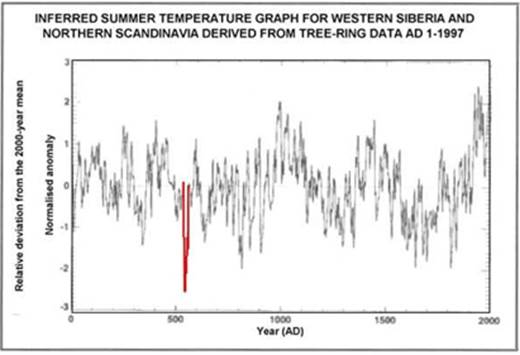
But the biggest famines
That we've examined
Followed climatic distortions
Of Biblical proportions
Like extreme El Nino
Or super-volcano
No greater destruction
Than mega eruption
Darkened skies
Crops fail, many die
They know not why
But the kingdom, rarely survives
That we've examined
Followed climatic distortions
Of Biblical proportions
Like extreme El Nino
Or super-volcano
No greater destruction
Than mega eruption
Darkened skies
Crops fail, many die
They know not why
But the kingdom, rarely survives
Brian Fagan, Floods, Famines and Emperors (1999) has analysed the impact of various ecological crises on civilizations across the world, including the collapse of ancient Mayan and Khmer Empires, on different sides of the globe. David Keys, Catastrophe (1999), presents a volcanic eruption in between Java and Sumatra as the cause of a year of global cooling in 535 AD, which weakened civilizations all over the world, before unleashing a global pandemic of Black Death which brought many of them to their knees. Amongst other consequences, the collapse of Arabian agriculture, and weakness among the neighbouring Roman and Persian Empires, facilitated the rise of Islam, and its rapid expansion. Keys' work seems to have been largely disregarded until the recent compendium Little (Ed.), Plague and the End of Antiquity (2008), which, while focussing on the plague, mentions and briefly considers Keys' more general argument.
I should also mention a natural phenomenon of destruction which did not make it into this verse (and which would mainly belong to Act I anyway): mega floods caused by retreating ice sheets, when an ice damn collapses and suddenly releases an enormous lake of meltwater that was trapped behind it, e.g. the Missoula Floods, and Agassiz Floods c. 15,000 - 8,000 years ago in North America. The (multiple) Missoula Floods had a peak flow rate c. 1,000,000 times greater than Niagara Falls, at a speed of 80mph. The Missoula dates of 15-13,000 years ago overlap with the older end of the range of estimates for the first human colonization of the Americas; if people were present then the Missoula floods may have been the most dramatic events ever witnessed by Human eyes. Lake Agassiz was larger, and while it's release was possibly less violent, it's disgorge into the North Atlantic is suspected as having shut down the Gulf Stream and caused a 1,000-year hiatus and reversal of the end of the last Ice Age, known as the Younger Dryas. I first read about these epic floods in Doug Macdougall's Frozen Earth: The Once and Future Story of Ice Ages (2004). The cultural memory of similar events in the Middle East, or rising sea levels associated with the end of the Ice Ages, may have inspired the Biblical Flood story.
I should also mention a natural phenomenon of destruction which did not make it into this verse (and which would mainly belong to Act I anyway): mega floods caused by retreating ice sheets, when an ice damn collapses and suddenly releases an enormous lake of meltwater that was trapped behind it, e.g. the Missoula Floods, and Agassiz Floods c. 15,000 - 8,000 years ago in North America. The (multiple) Missoula Floods had a peak flow rate c. 1,000,000 times greater than Niagara Falls, at a speed of 80mph. The Missoula dates of 15-13,000 years ago overlap with the older end of the range of estimates for the first human colonization of the Americas; if people were present then the Missoula floods may have been the most dramatic events ever witnessed by Human eyes. Lake Agassiz was larger, and while it's release was possibly less violent, it's disgorge into the North Atlantic is suspected as having shut down the Gulf Stream and caused a 1,000-year hiatus and reversal of the end of the last Ice Age, known as the Younger Dryas. I first read about these epic floods in Doug Macdougall's Frozen Earth: The Once and Future Story of Ice Ages (2004). The cultural memory of similar events in the Middle East, or rising sea levels associated with the end of the Ice Ages, may have inspired the Biblical Flood story.
Finally,
What's in a sneeze?
Foreign germs when they breathe
From over land or the seas
Can bring an empire to its knees
Han, Roman, Incas and Aztecs
Conquistadores in Mexico
Deeper in they'd go
Amerindians fell in great waves of plague
Squaws and Braves
50 million died and gave
Emptied lands to the White Man
I raised my palms and I prayed
Are we all to be slaves?
But no answer came
Something's wrong
The gods are all gone.
What's in a sneeze?
Foreign germs when they breathe
From over land or the seas
Can bring an empire to its knees
Han, Roman, Incas and Aztecs
Conquistadores in Mexico
Deeper in they'd go
Amerindians fell in great waves of plague
Squaws and Braves
50 million died and gave
Emptied lands to the White Man
I raised my palms and I prayed
Are we all to be slaves?
But no answer came
Something's wrong
The gods are all gone.
William H. McNeill's Plagues and Peoples (1976) explores the astonishing role of disease throughout history; it was one of the most mind-expanding books I have ever read. Microbes have shaped the fates of societies and empires far more powerfully than any 'great man' or political idea, until medical science brought them under (perhaps temporary) control.
The closing remarks are remarkably prescient, warning about new Asian strains of influenza, and that some 'hitherto obscure parasitic organism may escape its accustomed ecological niche and expose the dense human populations that have become so conspicuous a feature of the earth to some fresh and perchance devastating mortality'. At the time of writing (1976), HIV/AIDS had already spread unknown from West Africa to Haiti and then to the USA and the rest of the world; the pathology would not be successfully identified by American scientists for another ten years.
There are so many powerful ideas in Plagues and Peoples that I will not attempt to do them justice here; but it will be referenced again elsewhere. That it was written by a humanities scholar rather than, say, an equivalent of Joseph Needham trained in the biological sciences, is frankly incredible, and a testament to how far ahead of the rest of academia William H. McNeill was (and still is, for much of it today).
The closing remarks are remarkably prescient, warning about new Asian strains of influenza, and that some 'hitherto obscure parasitic organism may escape its accustomed ecological niche and expose the dense human populations that have become so conspicuous a feature of the earth to some fresh and perchance devastating mortality'. At the time of writing (1976), HIV/AIDS had already spread unknown from West Africa to Haiti and then to the USA and the rest of the world; the pathology would not be successfully identified by American scientists for another ten years.
There are so many powerful ideas in Plagues and Peoples that I will not attempt to do them justice here; but it will be referenced again elsewhere. That it was written by a humanities scholar rather than, say, an equivalent of Joseph Needham trained in the biological sciences, is frankly incredible, and a testament to how far ahead of the rest of academia William H. McNeill was (and still is, for much of it today).
McNeill observed that both native Amerindians and Spanish Conquistadors interpreted the mass plagues that affected the Amerindians but not Spanish as evidence of divine action, and that the subsequent Spanish conquest was divinely ordained. Such interpretations, and the general disruption, disorganisation and loss of morale, as death struck up and down the social hierarchy at will, impeded indigenous resistance.
The role of disease in disrupting religions was not new in history. McNeill argued in Plagues and Peoples (1976) that Christianity made vital inroads in the Roman Empire during the Antonine Plagues (c. 165 AD); Christian charity and willingness to nurse the sick helped save lives and gain converts, while the old gods were discredited by the catastrophe. But forming a powerful symbiotic relationship like that between religion and state can be a double-edged sword: when the Justinian Plagues (540s AD) ravaged the Mediterranean world (and beyond) and, along with the volcanic winter that preceded (and triggered?) them, and decades of ensuing political and social turmoil, the Roman Empire and its religion were again discredited. Thus, the reformist movement known as Islam stepped into the void; or so argues David Keys in Catastrophe (1999).
The role of disease in disrupting religions was not new in history. McNeill argued in Plagues and Peoples (1976) that Christianity made vital inroads in the Roman Empire during the Antonine Plagues (c. 165 AD); Christian charity and willingness to nurse the sick helped save lives and gain converts, while the old gods were discredited by the catastrophe. But forming a powerful symbiotic relationship like that between religion and state can be a double-edged sword: when the Justinian Plagues (540s AD) ravaged the Mediterranean world (and beyond) and, along with the volcanic winter that preceded (and triggered?) them, and decades of ensuing political and social turmoil, the Roman Empire and its religion were again discredited. Thus, the reformist movement known as Islam stepped into the void; or so argues David Keys in Catastrophe (1999).
--The End of Act II--
ACT III - The Rise of the West, Modern Revolutions and the World Today
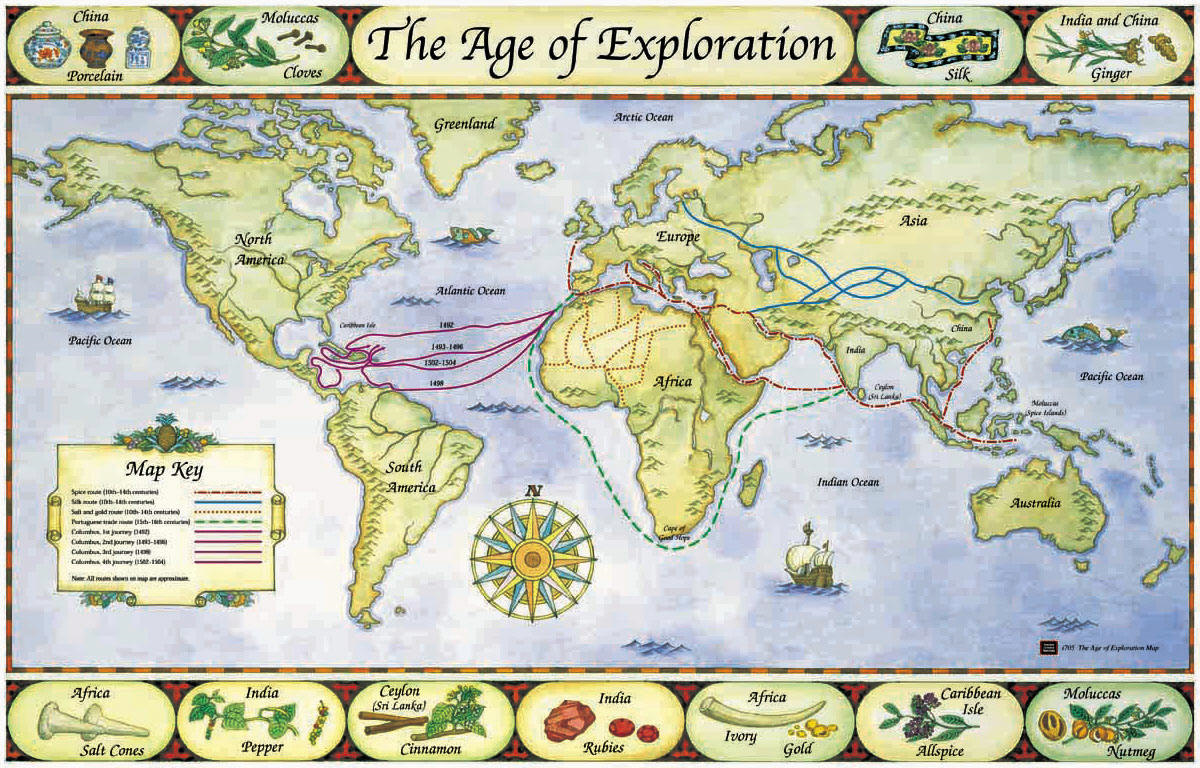
The web had closed
Around most of the globe
By 1500 AD:
What would the next half-Millennium see?
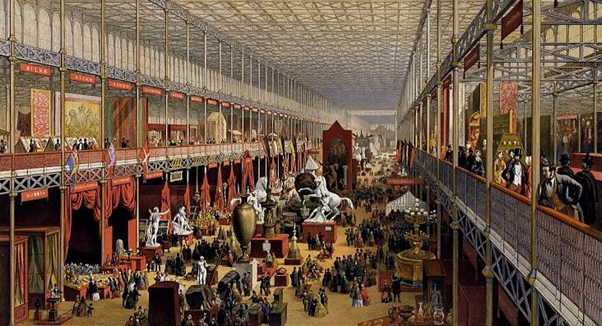
Primarily
The Rise of the West
From un-cleared forest
To unrestrained behemoth
In just nine centuries
Before cataclysm
And re-balancing
In the process, initiating
Great waves of change
On every continent,
In every domain
The Rise of the West
From un-cleared forest
To unrestrained behemoth
In just nine centuries
Before cataclysm
And re-balancing
In the process, initiating
Great waves of change
On every continent,
In every domain
William H. McNeill and J.R. McNeill co-authored The Human Web: A Bird's Eye View of Human History (2003), which we met in Act II, and which follows the progress and impact of the webs of interaction among humans as they spread around the planet. The years around 1500 were an important milestone, not only for the fusion of the Old World and New World webs into the first 'Worldwide Web', but also for the thickening of the webs as long-distance oceanic voyages became more frequent and their cargo more voluminous.
The only exception among complex agricultural societies by this time was the highland region of Papua New Guinea, which was not discovered by outsiders until the 1930s, when aviators observed farmlands there from above.
The only exception among complex agricultural societies by this time was the highland region of Papua New Guinea, which was not discovered by outsiders until the 1930s, when aviators observed farmlands there from above.
'Nine centuries' refers to the period roughly from 1000-1900 AD. Act III picks up the story from c. 1500, when Europe was beginning to 'catch up' with, but was still considerably less sophisticated than, other major Old World civilizations.

So,
Europeans had taken home
The learnings of Rome,
Greece and Islam,
Not to mention
Chinese invention;
Began to expand
Touching every land
From ocean to ocean
Ceaseless motion
Disturbing old notions
Europeans had taken home
The learnings of Rome,
Greece and Islam,
Not to mention
Chinese invention;
Began to expand
Touching every land
From ocean to ocean
Ceaseless motion
Disturbing old notions
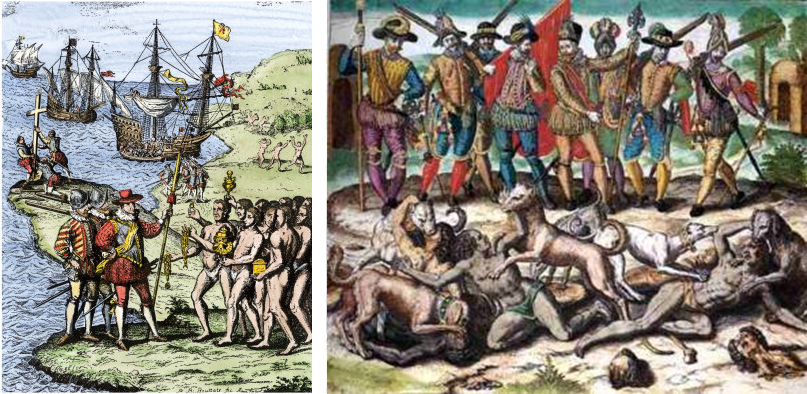
Early in their journeys
They struck
Purely by luck
Two enormous lands
Now called American
Divided by treaties
Full of new species
Numerous peoples
And even some cities
At first through Spain
Came global distribution of the gains,
We called it the Columbian Exchange
They struck
Purely by luck
Two enormous lands
Now called American
Divided by treaties
Full of new species
Numerous peoples
And even some cities
At first through Spain
Came global distribution of the gains,
We called it the Columbian Exchange
William Bernstein's A Splendid Exchange: How Trade Shaped the World (2008) spends a few concise pages turning the myth of Christopher Columbus as a great navigator on its head. Famously, we are told, Columbus sought a westward route to China, but landed on a Caribbean island instead, inaugurating the discovery of the Americas, which were then unknown to Europeans*. But we might pause for a moment to ask - what would have happened if the Americas were not there? Columbus and his crews would have all starved, lost at sea. And they should have known this - Bernstein explains that the circumference of the Earth had been calculated as long ago as c. 200 BC by the ancient Greeks, with a high degree of accuracy; Columbus cherry-picked his data and deluded himself that the westward route was possible. Unfortunately, the Portuguese royal court was well-stocked with learned men who could check Columbus' maths and point out his fatal errors - that's why he had trouble gaining royal sponsorship! The courts of Spain, England and France also rightly rejected his plans before the Spanish Queen somehow changed her mind. See also James W. Loewen, Lies my Teacher Told Me (1995), for more revision of Columbus myths, including an account of the brutal savagery he meted out on Amerindians.
*'Viking' settlers in Greenland visited Vinland, their name for what is now north-east Canada, once a year to collect supplies especially charcoal, but knowledge of these lands does not appear to have been widespread in Europe, and by 1492 the Greenland colonies were cut off from shipping by the Little Ice Age. In any case, no-one could have guessed that those shores were the edge of two contiguous continents stretching literally to the other end of the Earth. No-one had any clue that there was anything but 12,000 miles of ocean between European and Chinese shores. It could therefore be argued that Columbus' discovery of the Americas was therefore the greatest stroke of fortune in history
*'Viking' settlers in Greenland visited Vinland, their name for what is now north-east Canada, once a year to collect supplies especially charcoal, but knowledge of these lands does not appear to have been widespread in Europe, and by 1492 the Greenland colonies were cut off from shipping by the Little Ice Age. In any case, no-one could have guessed that those shores were the edge of two contiguous continents stretching literally to the other end of the Earth. No-one had any clue that there was anything but 12,000 miles of ocean between European and Chinese shores. It could therefore be argued that Columbus' discovery of the Americas was therefore the greatest stroke of fortune in history
The phrase, 'Columbian Exchange' was first coined by Alfred Crosby in 1972, to describe the enormous range and volume of people, goods, species, techniques, ideas, diseases, etc. which travelled in both directions between the New World and the Old World, over several centuries. William H. McNeill and J.R. McNeill's The Human Web (2003) is of course about interaction in general; the Columbian Exchange followed the fusion of the first fully 'Worldwide Web', to use their terminology, from the existing Old World and New World webs, and is therefore treated at length in its wider context.
I have a copy of, but have not yet read, Charles Mann's 1493: Uncovering the New World Columbus Created (2012), which is the most recent treatment of the subject, but if his 1491: New Revelations of the Americas Before Columbus (2005) is anything to go by, it will be excellent. 1491 describes the human history of the Americas from the Ice Age colonisation c.15,000 years ago, until the eve of the European intrusion.
I have a copy of, but have not yet read, Charles Mann's 1493: Uncovering the New World Columbus Created (2012), which is the most recent treatment of the subject, but if his 1491: New Revelations of the Americas Before Columbus (2005) is anything to go by, it will be excellent. 1491 describes the human history of the Americas from the Ice Age colonisation c.15,000 years ago, until the eve of the European intrusion.
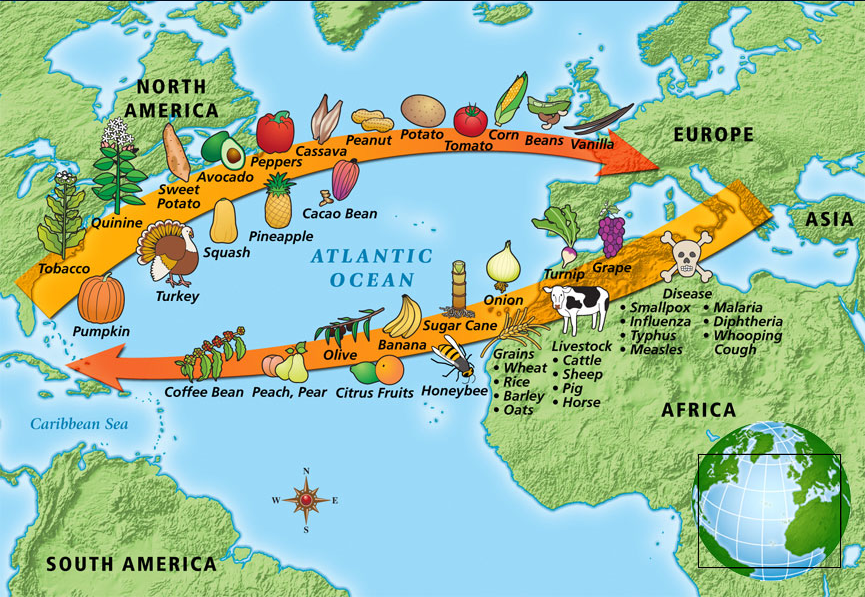
Potatoes, tomatoes,
Peanuts chilli and maize
Enriched the diets
Of Afro-Eurasia
Treasures of silver and gold
Helped market trades flow
Medicines, like quinine
To combat malaria
And open all areas
In the other direction
Diseases of course,
Cattle and the horse
Millions of people
The book and the steeple
Peanuts chilli and maize
Enriched the diets
Of Afro-Eurasia
Treasures of silver and gold
Helped market trades flow
Medicines, like quinine
To combat malaria
And open all areas
In the other direction
Diseases of course,
Cattle and the horse
Millions of people
The book and the steeple
The flow of exchange did not happen overnight; many of the important crops took several centuries to take root and flourish in foreign continents. Quinine was exported as a medicine for several centuries before the plants that produced it were themselves exported. Around 1850, plantations of the Cinchon tree, native to Peru and from which the powerful anti-malarial drug quinine is derived, were established in what is now Indonesia. Their output lowered the world price of the drug and finally opened tropical and sub-tropical Africa first to exploration and later conquest; previously the death rate among Europeans was too high to maintain a presence beyond small port communities.
At the end of Act II, we saw how disease devastated indigenous Amerindian peoples, their states and societies, and literally cleared land for white European conquest. But diseases would continue to arrive, including yellow fever and malaria from Africa, which would turn the disease gradient against fresh white European arrivals in widespread areas, particularly the tropics. J. R. McNeill's Mosquito Empires: Ecology and War in the Greater Caribbean, 1620-1914 (2010) is a masterful account of the continuing role of disease in the Americas, from the ecological changes associated with forest clearance and plantation agriculture, which facilitated the spread of the pathogens, to their impacts on political events of the first order.
Ever wonder how the growing naval behemoth that was 18th-Century Great Britain singularly failed to pick off any of the glittering prizes of the declining Spanish Empire? Locally-born citizens of Spanish descent acquired resistance/immunity (or died) in early childhood, so the besiegers of say Cartagena in 1741 would be laid waste while the defenders were not. Meanwhile, black Africans, who enjoyed greater resistance and immunity, were therefore (unfortunately for them) the only reliable source of labour which could work Caribbean sugar plantations once the diseases had established themselves during the 17th-century, greatly increasing demand in the African slave trade.
More surprisingly, the Haitian slave revolt (1790-1804), the American War of Independence (1776-83), the Latin American wars of Independence (1815-20), United States wars against Mexico, and France's failure to build the Panama Canal were all shaped in very significant ways by Yellow Fever and Malaria. Finally, c.1900, the American constructors of the Panama Canal mastered the management of these diseases and their vectors.
Ever wonder how the growing naval behemoth that was 18th-Century Great Britain singularly failed to pick off any of the glittering prizes of the declining Spanish Empire? Locally-born citizens of Spanish descent acquired resistance/immunity (or died) in early childhood, so the besiegers of say Cartagena in 1741 would be laid waste while the defenders were not. Meanwhile, black Africans, who enjoyed greater resistance and immunity, were therefore (unfortunately for them) the only reliable source of labour which could work Caribbean sugar plantations once the diseases had established themselves during the 17th-century, greatly increasing demand in the African slave trade.
More surprisingly, the Haitian slave revolt (1790-1804), the American War of Independence (1776-83), the Latin American wars of Independence (1815-20), United States wars against Mexico, and France's failure to build the Panama Canal were all shaped in very significant ways by Yellow Fever and Malaria. Finally, c.1900, the American constructors of the Panama Canal mastered the management of these diseases and their vectors.

From coast to coast
We're at a crossroads
At the centre of the network
Stood London and Lisbon,
Amsterdam and Antwerp;
Hence the concentration
Of new information
Wealth and innovation
In a narrow location
Canons fired,
What's on the horizon inspired
New phases of evolution:
Scientific, and industrial revolution
We're at a crossroads
At the centre of the network
Stood London and Lisbon,
Amsterdam and Antwerp;
Hence the concentration
Of new information
Wealth and innovation
In a narrow location
Canons fired,
What's on the horizon inspired
New phases of evolution:
Scientific, and industrial revolution
David Christian, in Maps of Time (2004), makes the powerful argument that the reasons why the Industrial Revolution happened in Great Britain when it did were similar to why the breakthroughs to agriculture and the formation to states happened 5-10,000 years earlier in the Middle East: both were 'a bottleneck and a hub', i.e. both an area of relatively intense overlap of network paths, and a centre of gravity.
It is interesting to compare Christian's line of reasoning to Vermeij's observations in Nature: An Economic History (2004) that larger and warmer (more energy-dense) ecosystems tend to be centres of innovation, from which species of superior power tend to emerge and migrate into peripheral regions.
It is interesting to compare Christian's line of reasoning to Vermeij's observations in Nature: An Economic History (2004) that larger and warmer (more energy-dense) ecosystems tend to be centres of innovation, from which species of superior power tend to emerge and migrate into peripheral regions.
Jack Goldstone's Why Europe? The Rise of the West in World History 1600-1850 (2009), offers another important perspective on why the Industrial Revolution happened when and where it did. Goldstone surveys various competing theories, in most cases finding that European exceptionalism is exaggerated in many respects (e.g. urban economic development, liquid capital, long-distance trade and credit, technical skill, religious tolerance, tariffs and taxation, private sector freedom from regulartion, etc.), before concluding a number of points:
1. The IR is best understood as a very long-term period of accelerating innovation, centred in Great Britain for c. 150 years from 1700-1850;
2. The immediate cause was the emergence of a social milieu of interacting natural philosophers, technical experimenters and financiers;
3. Crucial for this was the scientific community comprised of the Scottish Universities and the Royal Society headquartered in London (not Oxbridge, for all its self-importance!);
4. These movements had their roots in the Scientific Revolution of the 17th Century, which had its own origins in the wave of new knowledge and information washing over Europe since 1500 from the Voyages of Discovery, the findings of astronomy, and the supernova event of 1604 which was visible to the naked eye; together these new data helped break the rigid authority of the medieval European worldview and liberate scientific enquiry;
5. Also the absence of impediment from and lack of reliance on the central political authority was important.
For me, Goldstone's arguments are persuasive and important, but they are even more powerful when considered in the context of David Christian's analysis described in the previous point. The following verses explore some of these points further and offer my own conclusion on the question, 'Why Europe?'
1. The IR is best understood as a very long-term period of accelerating innovation, centred in Great Britain for c. 150 years from 1700-1850;
2. The immediate cause was the emergence of a social milieu of interacting natural philosophers, technical experimenters and financiers;
3. Crucial for this was the scientific community comprised of the Scottish Universities and the Royal Society headquartered in London (not Oxbridge, for all its self-importance!);
4. These movements had their roots in the Scientific Revolution of the 17th Century, which had its own origins in the wave of new knowledge and information washing over Europe since 1500 from the Voyages of Discovery, the findings of astronomy, and the supernova event of 1604 which was visible to the naked eye; together these new data helped break the rigid authority of the medieval European worldview and liberate scientific enquiry;
5. Also the absence of impediment from and lack of reliance on the central political authority was important.
For me, Goldstone's arguments are persuasive and important, but they are even more powerful when considered in the context of David Christian's analysis described in the previous point. The following verses explore some of these points further and offer my own conclusion on the question, 'Why Europe?'
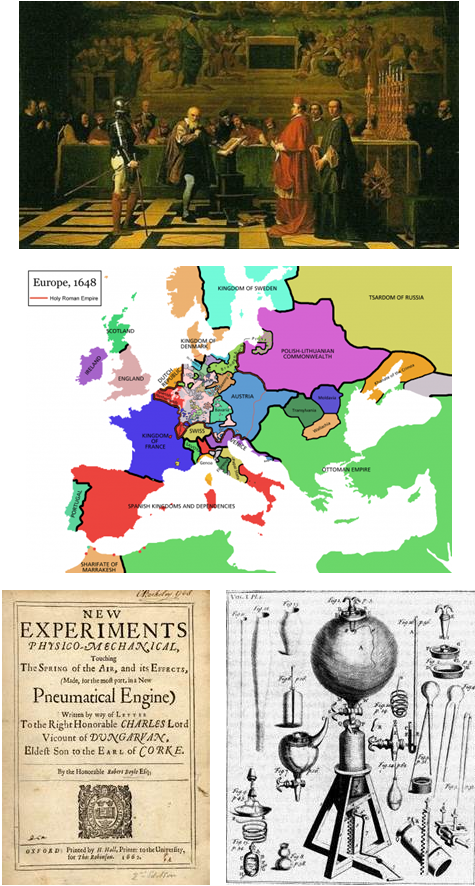
Great Treks across the sea
Voyages of discovery
Collecting grand libraries
Scientific inquiry
Had already been tried
By Cheng-Ho and Al-Razi
But their movements died
Candles extinguished
By the distinguished
Books closed
Minds froze
In Europe too,
Popes crushed hopes
Bound thoughts with ropes
Offered Galileo the rack
But why no turning back?
Slipping through the cracks
Between nations
The spirit of Francis Bacon
Kept escaping
Political fragmentation
Freed imagination
To sustain the game
Of invention and knowledge retention
Voyages of discovery
Collecting grand libraries
Scientific inquiry
Had already been tried
By Cheng-Ho and Al-Razi
But their movements died
Candles extinguished
By the distinguished
Books closed
Minds froze
In Europe too,
Popes crushed hopes
Bound thoughts with ropes
Offered Galileo the rack
But why no turning back?
Slipping through the cracks
Between nations
The spirit of Francis Bacon
Kept escaping
Political fragmentation
Freed imagination
To sustain the game
Of invention and knowledge retention
David Abernethy's The Dynamics of Global Dominance (2000) presents the 15th-Century Chinese Admiral Cheng Ho's great fleet and voyages as far larger and technically more impressive than Christopher Columbus' small caravels. The careers of Cheng Ho and the Chinese navy were unfortunately cut short in 1430 by an Imperial court more concerned by the overland threat from horseback warriors of the steppe, than by the profits of naval exploration and commerce. Compare this to the Genoese Columbus shopping around the royal courts of Portugal and Spain until he found a sponsor for his crackpot scheme. More on The Dynamics of Global Dominance below.
Islamic science flourished in the 9th and 10th centuries AD, absorbing Greek and Indian influences and adding much to human knowledge before declining in the 11th, but not before passing it all on to an emerging, peripheral and culturally backward Europe. McNeill's Rise of the West (1963) and Albert Hourani's A History of the Arab Peoples (1991) offer concise summaries of medieval Islamic science, but perhaps the best place to start is the Wikipedia page.
Islamic science flourished in the 9th and 10th centuries AD, absorbing Greek and Indian influences and adding much to human knowledge before declining in the 11th, but not before passing it all on to an emerging, peripheral and culturally backward Europe. McNeill's Rise of the West (1963) and Albert Hourani's A History of the Arab Peoples (1991) offer concise summaries of medieval Islamic science, but perhaps the best place to start is the Wikipedia page.
These lines represent my own arguments which were original (to me at least) when I first wrote about the importance of Europe's political fragmentation (and the geographical basis of the fragmentation) in a practice dissertation in Easter 2003. McNeill's The Shape of European History (1976) and possibly Venice: The Hinge of Europe (1974) were influential in noting that the same forces were gripping Europe, also The Pursuit of Power (1990), which discusses the importance of weapons development and procurement across borders; I read all of these later. At thte time, David Landes' The Wealth and Poverty of Nations (1998) was unsatisfactory; it seemed merely to enumerate technical innovations and attribute this to an amorphous culture of innovation across Europe. David Abernethy meanwhile, in the outstandingThe Dynamics of Global Dominance (2000) stressed the relevance of central authority vs. fragmentation in the context of overseas expansion.
For me, the crucial distinction is that non-European explorers, entrepreneurs, scholars and scientists were subject to the mercy of the interest and whims of singular central authorities much more precariously than their European equivalents. European authorities were indeed willing to stamp out unorthodox thought with ruthless brutality (see for example the Spanish Inquisition), but were unable to influence thought beyond their own borders.
We might also consider that the outlets on population pressure afforded by temperate, disease-cleared lands in the Americas and Australasia (and to a lesser extent in South Africa), may have helped Europe, and in particular Great Britain, avoid a crippling internecine conflict like China's Taiping Rebellion (1850-70), and/or a renewed orthodox movement like the earlier Counter-Reformation referred to here.
For me, the crucial distinction is that non-European explorers, entrepreneurs, scholars and scientists were subject to the mercy of the interest and whims of singular central authorities much more precariously than their European equivalents. European authorities were indeed willing to stamp out unorthodox thought with ruthless brutality (see for example the Spanish Inquisition), but were unable to influence thought beyond their own borders.
We might also consider that the outlets on population pressure afforded by temperate, disease-cleared lands in the Americas and Australasia (and to a lesser extent in South Africa), may have helped Europe, and in particular Great Britain, avoid a crippling internecine conflict like China's Taiping Rebellion (1850-70), and/or a renewed orthodox movement like the earlier Counter-Reformation referred to here.
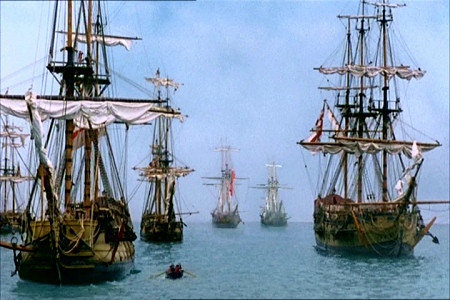
Science and it's appliance
In pursuit of finance
An unholy alliance
Of crown and capital
Fighting their battles
For markets and supplies
While volumes rise and rise
Growing so quick
It's autocatalytic
In pursuit of finance
An unholy alliance
Of crown and capital
Fighting their battles
For markets and supplies
While volumes rise and rise
Growing so quick
It's autocatalytic
Under pressure from vested interests, the state pursued foreign policies which secured supplies and export markets, and protected them from rivals, while also protecting domestic markets from superior imports with tariff barriers where applicable.
These arguments apply to several countries in Western Europe, but it struck me, when studying 18th-Century Europe at university, that Great Britain was compelled to invest in the sea for reasons of national security over and above the profit motive, in a way that did not apply as strongly to any other country. By 'national security' I mean not just protection against seaborne invasion by the much larger continental armies, but also the protection of vital supply lines, the ability to export goods and people, to grow rich by trade and to relieve population pressure. This applied from perhaps as early as 1650 until at least 1950. Only with Britain's eclipse by the rise of the USA, the Cold War and the end of military rivalry in Western Europe, did this 300-year strategic imperative finally diminish.
These arguments apply to several countries in Western Europe, but it struck me, when studying 18th-Century Europe at university, that Great Britain was compelled to invest in the sea for reasons of national security over and above the profit motive, in a way that did not apply as strongly to any other country. By 'national security' I mean not just protection against seaborne invasion by the much larger continental armies, but also the protection of vital supply lines, the ability to export goods and people, to grow rich by trade and to relieve population pressure. This applied from perhaps as early as 1650 until at least 1950. Only with Britain's eclipse by the rise of the USA, the Cold War and the end of military rivalry in Western Europe, did this 300-year strategic imperative finally diminish.
I do not feel that I have yet discovered an adequate general explanation for economic growth. Comparison with the concept autocatalysis in chemistry and biology is my own suggestion. My idea is probably influenced by, I think (it was c. 2003), Eric Jones' argument that economic growth just happens, if unimpeded, and it is more telling to identify the impediments to growth in history (perishable goods, difficulty of transport, danger of confiscation/theft by force, etc.). I came across Jones' argument in, I think, Human History and Social Process (1989), which he co-authored with Goudsblom and Mennell, but have not read any of his more comprehensive works such as Growth Recurring (1988).
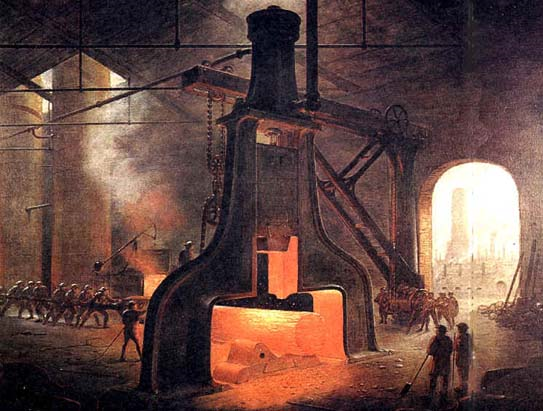
The flame of knowledge became
A furnace burning in earnest
Not wood but coal, oil and gas
Ancient reserves are vast
Allowing production in mass
Inventions coming thick and fast
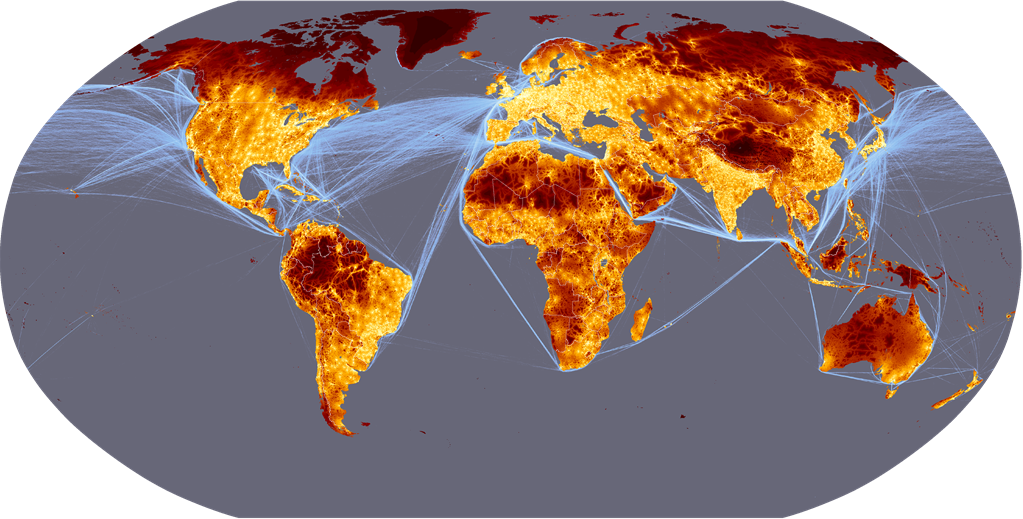
Train stations
Steel ships, aviation
Distances shrinking
Communication in an instant
The modern web:
All the World's knowledge in bed
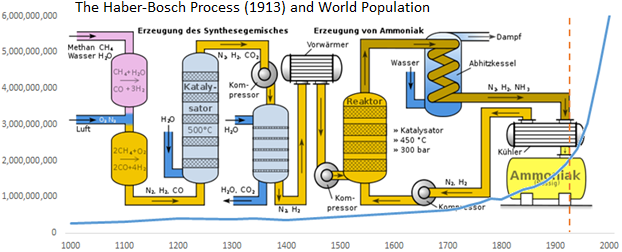
We broke organic constraints
On population capacity
With new audacity
Of 7 billion people alive today
Half would die without the supply
Of synthetic fertilizers
From the land of Kaisers
The labour of Bosch and Haber
Our creator and saviour
On population capacity
With new audacity
Of 7 billion people alive today
Half would die without the supply
Of synthetic fertilizers
From the land of Kaisers
The labour of Bosch and Haber
Our creator and saviour
In high-school chemistry, we are taught the chemical reaction and temperature/pressure conditions for the Haber-Bosch process, which converts atmosphere nitrogen into ammonia, and that this output is used in the manufacture of fertilizers and explosives. But we are not told the scale of Humankind's current dependency on the process, nor the dangers of its disruption to natural nitrogen cycles; Vaclav Smil's Enriching the Earth: Fritz Haber, Carl Bosch and the Transformation of World Food Production (2001) sets us straight on these points and more. As is customary of Smil, it is a masterful blend of history and science, technical detail and quantitative analysis, rooted in context.

Europe wasn't the first
Expanding society
But what volume and variety
Of techniques in infiltration,
Domination and exploitation;
By Nineteen-Hundred, barely a few
Had not succumbed yet
Expanding society
But what volume and variety
Of techniques in infiltration,
Domination and exploitation;
By Nineteen-Hundred, barely a few
Had not succumbed yet
I think I first heard the phrase 'expanding society' used to describe European imperial expansion by John Darwin in a lecture in 2003. It refers to a society which projects itself on others societies and lands politically, economically and demographically, i.e. explores, colonises, subordinates them. William H. McNeill's Plagues and Peoples (1976) identifies the phenomenon recurring throughout history from ancient times, and adds disease gradients as crucial mediators of the process. Jared Diamond's Guns Germs and Steel (1997) is another celebrated comparative approach, while David Abernethy’s Dynamics of Global Dominance (2000) illuminates the role of disease (amongst other phenomena such as religion) in shaping the geographical patterns of European expansion and conquest.
On a side note, McNeill's Plagues and Peoples also finds similarities in demographic trends among the ancient and modern worlds, such as the tendency for the expanding society to eventually decline in fertility and import people from marginal and/or subordinate societies where reproductive rates are now higher. McNeill notes this can be seen as a manifesto of the Biblical adage 'the meek shall inherit the Earth'. In ancient times dense urban societies were susceptible to catastrophic pandemic in a way that (we hope!) the modern world will be protected from by medical science.
On a side note, McNeill's Plagues and Peoples also finds similarities in demographic trends among the ancient and modern worlds, such as the tendency for the expanding society to eventually decline in fertility and import people from marginal and/or subordinate societies where reproductive rates are now higher. McNeill notes this can be seen as a manifesto of the Biblical adage 'the meek shall inherit the Earth'. In ancient times dense urban societies were susceptible to catastrophic pandemic in a way that (we hope!) the modern world will be protected from by medical science.
The 'survivors' were Japan, Thailand, Afghanistan and Abyssinia (Ethiopia).
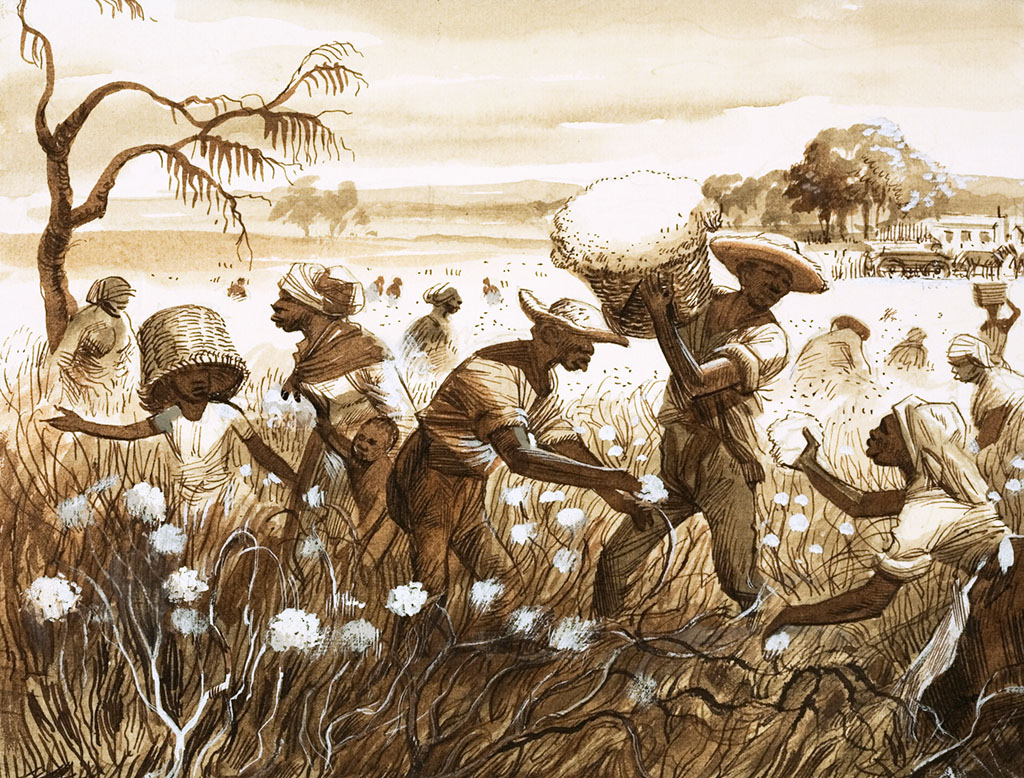
Trading guns and spades
In Africa for slaves
Across the waves
To lands of freedom
To harvest the cotton
That industry feeds on
In Africa for slaves
Across the waves
To lands of freedom
To harvest the cotton
That industry feeds on
There is much debate about the economic significance of black slavery in the Americas, but for me it is of central importance: the 'triangular trade' in the 18th century as a driver of shipping and manufacturing export, production of the sugar which powered early industrial labour and supplied so much wealth to European states, and in the 19th century for the production of cotton. The importance of cotton manufacture is in the next verse.
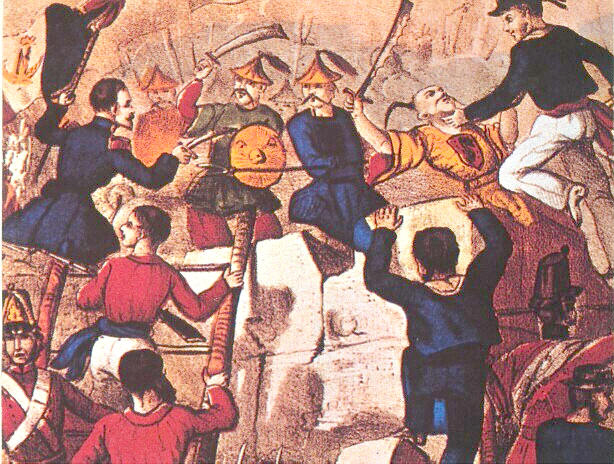
Great Britain
Exploited divisions
To complete the acquisition
Of India
And monopoly on opium
Pushing it on Canton
A trade to be counted on
Until the prices got better
For textiles from Manchester
Exports industrial
Just as irresistible
Exploited divisions
To complete the acquisition
Of India
And monopoly on opium
Pushing it on Canton
A trade to be counted on
Until the prices got better
For textiles from Manchester
Exports industrial
Just as irresistible
David Abernethy's The Dynamics of Global Dominance (2000) was probably the third most important influence on my early historical career, after William H. McNeill and Jack Goldstone (I discovered Chaisson and Christian much later). The Dynamics considers why European overseas empires were so strikingly successful from 1500 onwards, and finds the answer in a powerful alliance between state, private commerce and church. He then examines the nature of the non-European lands and states that Europeans found, and explains how their strengths and weaknesses helped shape the extent and timings of European penetration. One such weakness came from internal political division, the exploitation of which by European invaders was important in the conquests of the Aztec Empire and the successor states to the Mughal Empire in India.
See also David Washbrook's excellent essay, Progress and Problems: South Asian Economic and Social History c. 1720-1860 in Modern Asian Studies 22 vol 1 (1998), which reveals how conflict among the emerging, modernising successor states to the Mughal Empire drew the British into India.
See also David Washbrook's excellent essay, Progress and Problems: South Asian Economic and Social History c. 1720-1860 in Modern Asian Studies 22 vol 1 (1998), which reveals how conflict among the emerging, modernising successor states to the Mughal Empire drew the British into India.
The British East India Company, i.e. the government of British India, enforced a monopoly for itself on the production and export of opium in India in 1781. The main market was China, where, despite Imperial prohibition, it commanded a high price and was widely consumed, causing the sort of social disruption associated with narcotic use.
This trade became of central importance to Great Britain until at least c. 1850 for two reasons:
1. It provided enormous revenues to the colonial government of British India; and
2. It balanced the trade deficit between Great Britain and China.
Britain imported large quantities of Chinese tea and porcelain, which she had to pay for in bullion because Chinese markets were not interested in any British exports; such an imbalance is potentially very economically damaging. It was not until the 1830s in India and 1850s in China that British textiles were of a sufficient quality and price to flood local markets and devastate their domestic industries.
It is not often remarked that the early British Empire and Industrial Revolution were born on the back of slavery and narcotics.
This trade became of central importance to Great Britain until at least c. 1850 for two reasons:
1. It provided enormous revenues to the colonial government of British India; and
2. It balanced the trade deficit between Great Britain and China.
Britain imported large quantities of Chinese tea and porcelain, which she had to pay for in bullion because Chinese markets were not interested in any British exports; such an imbalance is potentially very economically damaging. It was not until the 1830s in India and 1850s in China that British textiles were of a sufficient quality and price to flood local markets and devastate their domestic industries.
It is not often remarked that the early British Empire and Industrial Revolution were born on the back of slavery and narcotics.
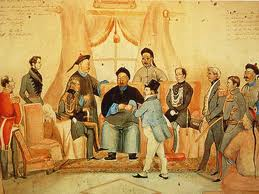
Imposing Unequal Treaties
On Far Eastern peoples
Lacking protection,
Their domestic wares
Can't compete in fares,
So they disappeared.
Now economists will disagree
But every major modern economy
Grew up behind tariffs and barriers
Until among the leaders
They no longer needed them
And no longer believed in them
On Far Eastern peoples
Lacking protection,
Their domestic wares
Can't compete in fares,
So they disappeared.
Now economists will disagree
But every major modern economy
Grew up behind tariffs and barriers
Until among the leaders
They no longer needed them
And no longer believed in them
This is true of Britain, Germany, France USA, Russia and China, at different times from 1700 (Great Britain prohibiting import of Indian calicoes before launching the industrial revolution based on textile manufacture) to the present (China).
These were my own thoughts as I inadvertently came across the relevant facts studying European empires at university.
Japan is an exception that proves the rule: unable to erect tariff barriers until military equals of the West, they developed skilfully and painfully under masterful central planning, mass-mobilization and conditions of heavy over-work for the labouring classes. They sent a delegation around the world to learn from other countries, and imported foreign (Western) specialists so long as they were required.
These were my own thoughts as I inadvertently came across the relevant facts studying European empires at university.
Japan is an exception that proves the rule: unable to erect tariff barriers until military equals of the West, they developed skilfully and painfully under masterful central planning, mass-mobilization and conditions of heavy over-work for the labouring classes. They sent a delegation around the world to learn from other countries, and imported foreign (Western) specialists so long as they were required.
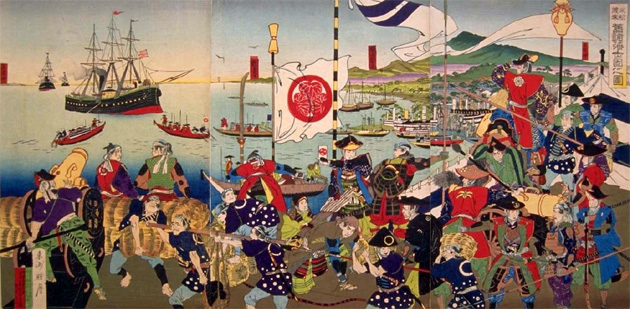
So how did the rest of the World
React when they heard
The knock of Europe as it neared?
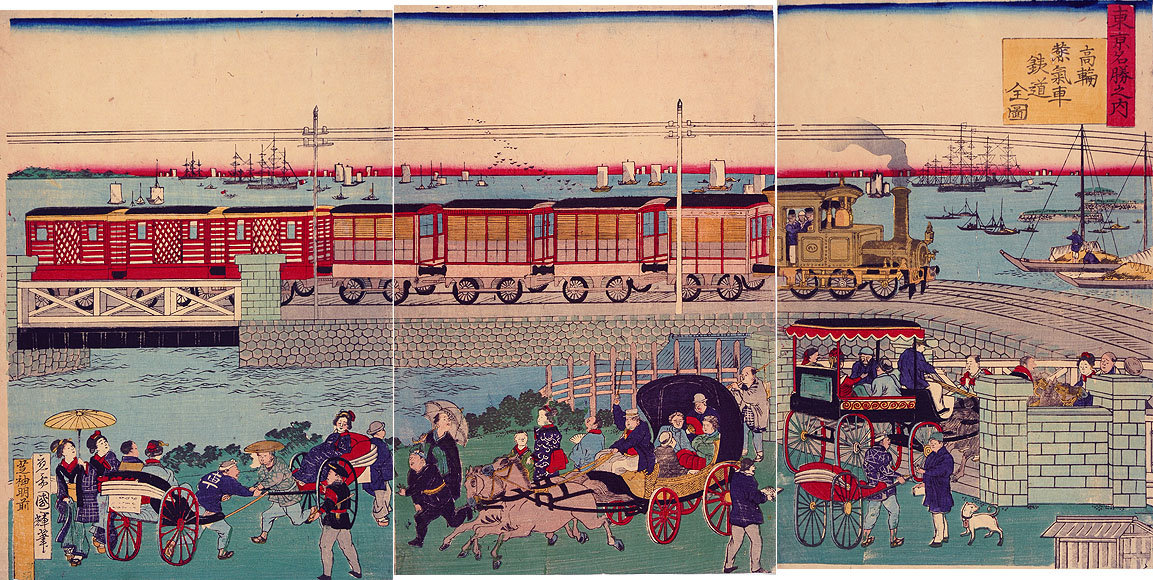
Old priorities
Of assembling armies
Took on new urgency
Everywhere emergency
Modern supplies and weaponry
Required larger bureaucracy,
Education and industry
Traditional hierarchy
Faced redundancy
Some were adaptable
Modernity compatible
In, say Japan
Less so for Islam
Of assembling armies
Took on new urgency
Everywhere emergency
Modern supplies and weaponry
Required larger bureaucracy,
Education and industry
Traditional hierarchy
Faced redundancy
Some were adaptable
Modernity compatible
In, say Japan
Less so for Islam
William H. McNeill, in The Rise of the West (1963) and later works, identified two main impulses to borrowing between societies: admiration and reaction to threat; we see the latter in action here. It quickly became apparent to would-be military modernizers that military strength in the age of machines required sweeping reforms to the economy, education, society and even culture. Given that the West had already 'worked out' many of the 'answers', wholesale importation of the Western way of life was often commenced (and this is still true of the world at the turn of the 21st Century, although not without reaction now as then). Such changes constituted threats both to the aspects of people's identity linked to their local cultures, and to the fortunes of those who enjoyed power, wealth, influence etc. in the old system. John Darwin also explores these points in his excellent After Tamerlane: The Rise & Fall of Global Empires 1400-2000 (2007).
This process is also what McNeill meant by 'Rise of the West' - forms of political, cultural, social and economic organisation that were first developed in Europe and North America being transplanted on, or adopted by, the rest of the world.
This process is also what McNeill meant by 'Rise of the West' - forms of political, cultural, social and economic organisation that were first developed in Europe and North America being transplanted on, or adopted by, the rest of the world.
McNeill explicitly made this contrast between Japanese and Islamic societies' differential abilities to adapt to the challenges of modernisation. I think I first came across it in A World History (1967).
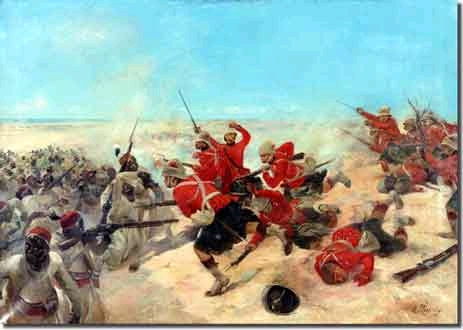
And still the persistence
Of problems of subsistence
Demographic cycles
Reinforced by credit crises
Threatened by all this
Elites might resist
But internal disorder
Could open the door
For hostile takeover
Of problems of subsistence
Demographic cycles
Reinforced by credit crises
Threatened by all this
Elites might resist
But internal disorder
Could open the door
For hostile takeover
An important dimension to add to the account of the challenge posed by the rise of the West, the rest of the world's reactions, takeover and resistance etc., as outlined in the preceding sections, comes from the emerging branch of historical study called Cliodynamics that we met in Act II.
Jack Goldstone in Revolution and Rebellion in the Early Modern World (1991) and Turchin and Nefedov in Secular Cycles (2008), and the journal Cliodynamics, explore the role of demographic cycles (or waves) in historical events as diverse as the English (1640), French (1789) and Russian (1917) revolutions, crises in the ancient Roman Empire, and the Taiping Rebellion (c. 1850-70). The last of these devastated China and paved the way for dismemberment into 'spheres of influence' dominated by competing European powers (and the USA).
The picture shown here is of the Battle of Tel-El-Kebir, which marks the final seizure of British control over Egypt in 1879. The fortunes of Egypt in the 19th century illustrate many of the themes in this and the preceding verses.
Jack Goldstone in Revolution and Rebellion in the Early Modern World (1991) and Turchin and Nefedov in Secular Cycles (2008), and the journal Cliodynamics, explore the role of demographic cycles (or waves) in historical events as diverse as the English (1640), French (1789) and Russian (1917) revolutions, crises in the ancient Roman Empire, and the Taiping Rebellion (c. 1850-70). The last of these devastated China and paved the way for dismemberment into 'spheres of influence' dominated by competing European powers (and the USA).
The picture shown here is of the Battle of Tel-El-Kebir, which marks the final seizure of British control over Egypt in 1879. The fortunes of Egypt in the 19th century illustrate many of the themes in this and the preceding verses.
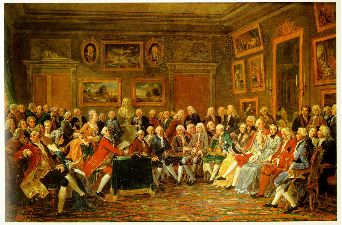
With all this novelty, turmoil and change
Thinkers needed new ways to explain;
New philosophy, or ideology
Eighteenth-Century Enlightenment
Highlighted with subtle refinement,
The irrationality of monarchy
Denied its divinity,
Challenged nobilities
And advocated liberty
Thinkers needed new ways to explain;
New philosophy, or ideology
Eighteenth-Century Enlightenment
Highlighted with subtle refinement,
The irrationality of monarchy
Denied its divinity,
Challenged nobilities
And advocated liberty
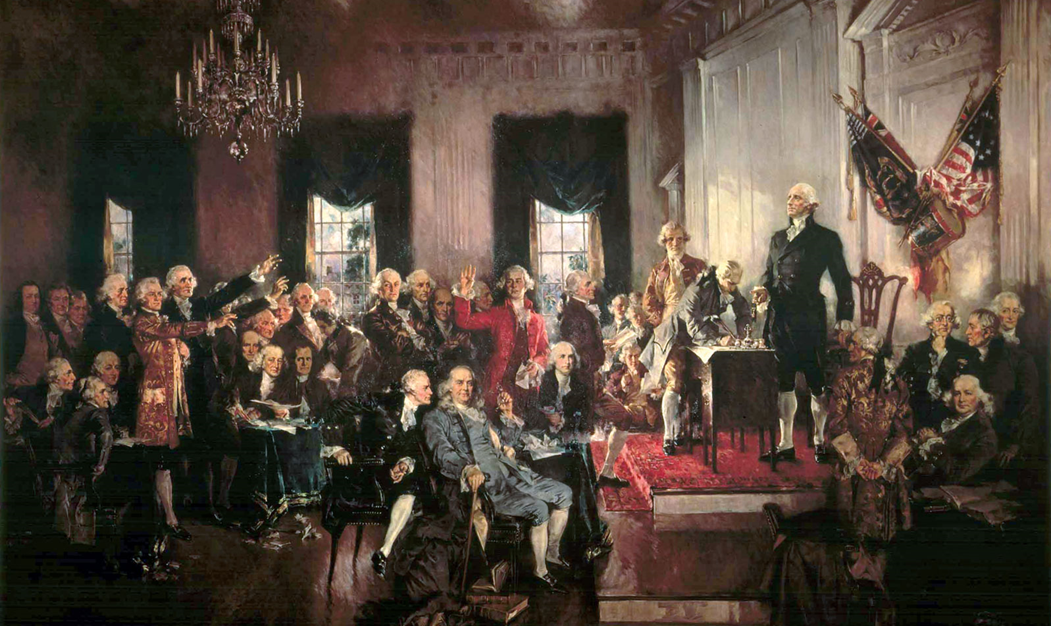
Newly-empowered individuals
Enjoying education,
Political participation
And pursuing their dreams.
Initially
This meant just men of means
But eventually
Led to the emancipation
Of slaves, women and whole nations
Enjoying education,
Political participation
And pursuing their dreams.
Initially
This meant just men of means
But eventually
Led to the emancipation
Of slaves, women and whole nations
An obvious contradiction in the history of the United States of America is the fact that her Declaration of Independence (1776), with its famous lines about liberty, equality, unalienable rights, etc., echoed in these verses, did not lead to the end of slavery for another 90 years. Further, the descendants of slaves did not enjoy basic rights of citizenship for another 100 years after that, suffering segregation, discrimination, arbitrary violence without adequate protection by law, etc. Compounding the irony is the fact the Declaration was written and signed by slaveowners. The position of the Declaration's main author, Thomas Jefferson, on slavery was contradictory but he remained a slaveowner while some Virginians freed their slaves. Similarly, the treatment of Native Americans and immigrants from non-Anglo Saxon, white ethnic groups fell far short of the ideals of the Declaration.
James W. Loewen Lies my Teacher Told Me (1995) explores the more nuanced realities behind popular myths in American history as presented in High School textbooks, finding that what actually happened and why is often very different to the official stories. And much more interesting. See also Howard Zinn's classic, A People's History of the United States (1980). Finally, David Bryon Davis' Inhuman Bondage: The Rise and Fall of Slavery in the New World (2006) is the most recent account of slavery, racism, their connections and their importance in the development of the USA.
Loewen's criticisms may or may not be out of date 18 years later, but his point certainly stands more generally, in that popular Western perceptions of history remain somewhat myopic and self-contragulatory. University-level history is professionally critical of the Western past, but professors have made only limited steps to expand their undergraduate syllabuses beyond the introspective.
James W. Loewen Lies my Teacher Told Me (1995) explores the more nuanced realities behind popular myths in American history as presented in High School textbooks, finding that what actually happened and why is often very different to the official stories. And much more interesting. See also Howard Zinn's classic, A People's History of the United States (1980). Finally, David Bryon Davis' Inhuman Bondage: The Rise and Fall of Slavery in the New World (2006) is the most recent account of slavery, racism, their connections and their importance in the development of the USA.
Loewen's criticisms may or may not be out of date 18 years later, but his point certainly stands more generally, in that popular Western perceptions of history remain somewhat myopic and self-contragulatory. University-level history is professionally critical of the Western past, but professors have made only limited steps to expand their undergraduate syllabuses beyond the introspective.

So Smith and Ricardo remarked it:
Allow freedom too in the market
Prices of food and labour
Subject to the favour
Of supply and demand
The invisible hand
Can give and it can it take
The earnings you make
Might not be a living wage
A different kind of slaves
With nothing to lose but their chains
Allow freedom too in the market
Prices of food and labour
Subject to the favour
Of supply and demand
The invisible hand
Can give and it can it take
The earnings you make
Might not be a living wage
A different kind of slaves
With nothing to lose but their chains
Adam Smith and David Ricardo were late-18th and early-19th Century thinkers credited with formulating the central tenets of classical economics such as the mutual benefits of free trade, comparative advantage, etc., which remain part of orthodox economic theory today. The 'invisible hand' is Smith's famous metaphor for the action of market forces.
Adapted from one of the closing lines of Karl Marx and Friedrich Engel's Communist Manifesto (1848).

That's why it was heard
All over the world:
The manifesto of Marx,
Read aloud, in town squares and the parks
And where the old regimes collapsed
We saw red on the maps
But only where they collapsed
All over the world:
The manifesto of Marx,
Read aloud, in town squares and the parks
And where the old regimes collapsed
We saw red on the maps
But only where they collapsed
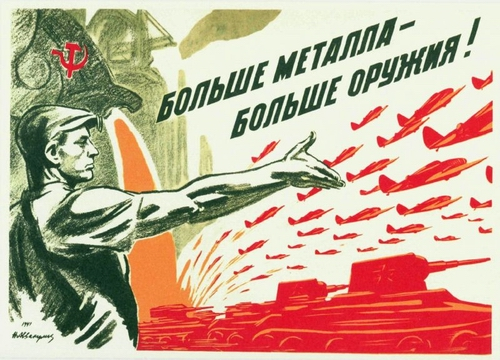
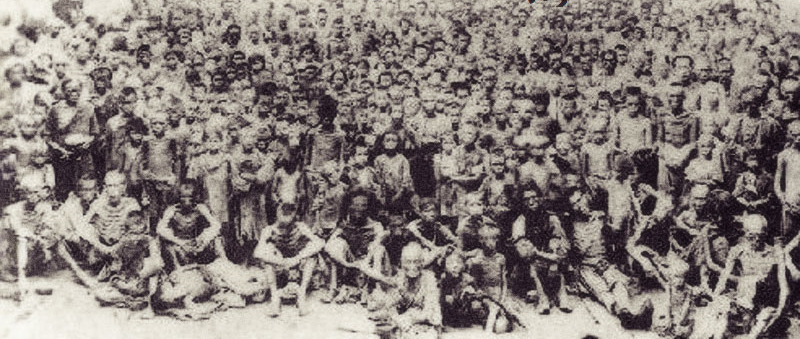
The Communist experiments
Industrialised whole continents
Building socialist utopia
Driven by ideals and paranoia
They pursued with zeal
Enemies, imagined and real
Performed wonders and great blunders
Defeated the Nazis
In the greatest war in history
Unlocked the energy
Of millions of people and atoms
Put the first man in space: yes it happened!
And it was Yuri Gagarin
While Lenin, Mao and Stalin
Filled up the gulags
And manufactured famines
Industrialised whole continents
Building socialist utopia
Driven by ideals and paranoia
They pursued with zeal
Enemies, imagined and real
Performed wonders and great blunders
Defeated the Nazis
In the greatest war in history
Unlocked the energy
Of millions of people and atoms
Put the first man in space: yes it happened!
And it was Yuri Gagarin
While Lenin, Mao and Stalin
Filled up the gulags
And manufactured famines
Orlando Figes' The Whisperers: Private Life in Stalin's Russia (2007) gives some idea of the enormous energy, commitment and sacrifice unleashed from the working and administrative classes trying to build the Soviet Union from the rubble of war and famine. Robert Service is the main authority on Stalin and the Stalinist Era among English-speaking writers, although I have not yet read any of his works. Simon Sebag-Montefiore's analysis of the workings of Stalin's inner circle in Stalin: The Court of the Red Tsar (2003) leaves no doubt as to who was ultimately responsible for the great Ukrainian famine and various other disasters and disruptions. Sebag-Montefiore's Young Stalin (2008) is a fascinating portrayal of the evolution of the monster and genius, his skills, paranoia and brutality, from poverty-stricken youth in Georgia to a co-leader of the world's greatest revolution.
Barber and Harrison's The Soviet Home Front: 1941-45 (1991) is a masterful account of one of the Soviet Union's greatest achievements: the survival, re-organisation and re-building of the war economy, including the famous relocation of vast heavy industries 1,000s of miles to the east; the economy was nearly destroyed by the invading Germans in 1941 and nearly collapsed from overstrain in 1942.
Frank Dikotter's recently-published Mao's Great Famine (2010) is an account of the event more commonly known today (even in the West) by its contemporary misnomer, the 'Great Leap Forward', during which c. 30 million Chinese perished needlessly. I have not read Dikotter's work, but the episode is well-presented in Jung Chang's laborious Wild Swans (1991).
Barber and Harrison's The Soviet Home Front: 1941-45 (1991) is a masterful account of one of the Soviet Union's greatest achievements: the survival, re-organisation and re-building of the war economy, including the famous relocation of vast heavy industries 1,000s of miles to the east; the economy was nearly destroyed by the invading Germans in 1941 and nearly collapsed from overstrain in 1942.
Frank Dikotter's recently-published Mao's Great Famine (2010) is an account of the event more commonly known today (even in the West) by its contemporary misnomer, the 'Great Leap Forward', during which c. 30 million Chinese perished needlessly. I have not read Dikotter's work, but the episode is well-presented in Jung Chang's laborious Wild Swans (1991).

Whatever the political model
We had some things in common
Government administration
War, health and education
Had new roles to fill
Required minds and skills
That the state tried to create
From a blank slate:
Loyalty and patriotism
Were bred in the school system
Teaching their own histories
That won't tell you rhymes like these
While we worship at the altar
Of nation and culture
Oh what a glory!
Pro patria mori
We had some things in common
Government administration
War, health and education
Had new roles to fill
Required minds and skills
That the state tried to create
From a blank slate:
Loyalty and patriotism
Were bred in the school system
Teaching their own histories
That won't tell you rhymes like these
While we worship at the altar
Of nation and culture
Oh what a glory!
Pro patria mori
These final lines are adapted from Wilfred Owen's famous poem Dulce et Decorum Est (1917). Owen was a British War Poet who fought and died in the Great War (1914-18).
Before the 20th Century
More men in armies
Fell to disease
Than to their enemies;
Now germ-free and clean
They faced machines
New ways and means
Of death and destruction
Massed ranks
Charged guns and tanks
Trenches gassed and shelled, it's hell,
Silence the bells
Fill the skies with death that flies
Over cities and countrysides
Home from the front,
The front's come home
Fire storms, napalm and A-bombs
We have powers to rival gods
More men in armies
Fell to disease
Than to their enemies;
Now germ-free and clean
They faced machines
New ways and means
Of death and destruction
Massed ranks
Charged guns and tanks
Trenches gassed and shelled, it's hell,
Silence the bells
Fill the skies with death that flies
Over cities and countrysides
Home from the front,
The front's come home
Fire storms, napalm and A-bombs
We have powers to rival gods
This claim has been made by various authors; I think I first read it in J. R. McNeill in Mosquito Empires: Ecology and War in the Greater Caribbean, 1620-1914 (2010). Disease was certainly a major source of casualties in most armies in history; I believe it was McNeill who remarked that the slaughter of the trenches in the Great War was made possible by advances in medicine and hygiene permitting such large concentrations of men in close contact.
Jonathan Glover's Humanity: A Moral History of the Twentieth Century (1999) charts the gradual changes in strategy and attitude that led to civilians and civilian economies being directly target in modern war. It had its origins in the British naval blockade of Germany 1918-19 (which helped force Versailles), but developed rapidly during World War II.
Initially in World War II, civilians were supposed to be 'off-limits' (in the Western theatre at least), but 'area bombing' was later introduced as a solution to the problem of how difficult it was to bomb industry or infrastructure with any accuracy. Eventually huge bombing deliberately destroyed whole cities and their inhabitants, whether by conventional explosives (many German cities), firestorms (e.g. Dresden and Tokyo), or atom bombs (Hiroshima and Nagasaki). Hitler had planned to starve tens of millions of people in Eastern Europe and Russia, and the Nazis of course did kill millions of Soviet civilians and POWs, on top of 6 million Jewish Holocaust victims, and the mass-murder of homosexuals, the disabled, gypsies and other minorities. Meanwhile the Japanese army in China killed c. 20 million civilians.
In the U.S.-Vietnam War (1965-73), the Vietnamese, Laotian and Cambodian countrysides were extensively carpet-bombed. Military planners considered, and in some cases tested, even more grandiose schemes of targeting civilian populations, including chemical, biological and radiation weapons (see Jacob Darwin Hamlin's Arming Mother Nature (2013)). During the Cold War, the USA and the Soviet Union famously produced and stockpiled enough nuclear weapons to destroy civilization as we know it several times over. Vaclav Smil, in Catastrophes and Trends (2008) cites these stockpiles as one of the greatest threats to humanity today.
Initially in World War II, civilians were supposed to be 'off-limits' (in the Western theatre at least), but 'area bombing' was later introduced as a solution to the problem of how difficult it was to bomb industry or infrastructure with any accuracy. Eventually huge bombing deliberately destroyed whole cities and their inhabitants, whether by conventional explosives (many German cities), firestorms (e.g. Dresden and Tokyo), or atom bombs (Hiroshima and Nagasaki). Hitler had planned to starve tens of millions of people in Eastern Europe and Russia, and the Nazis of course did kill millions of Soviet civilians and POWs, on top of 6 million Jewish Holocaust victims, and the mass-murder of homosexuals, the disabled, gypsies and other minorities. Meanwhile the Japanese army in China killed c. 20 million civilians.
In the U.S.-Vietnam War (1965-73), the Vietnamese, Laotian and Cambodian countrysides were extensively carpet-bombed. Military planners considered, and in some cases tested, even more grandiose schemes of targeting civilian populations, including chemical, biological and radiation weapons (see Jacob Darwin Hamlin's Arming Mother Nature (2013)). During the Cold War, the USA and the Soviet Union famously produced and stockpiled enough nuclear weapons to destroy civilization as we know it several times over. Vaclav Smil, in Catastrophes and Trends (2008) cites these stockpiles as one of the greatest threats to humanity today.
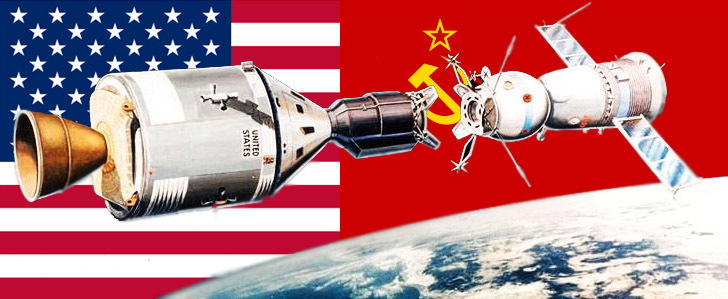
In times of peace planning didn't cease
Military got enormous investment
Invented computers and the internet
The arms race reached into space
Led to financial ruin
For the Soviet Union
Military got enormous investment
Invented computers and the internet
The arms race reached into space
Led to financial ruin
For the Soviet Union
There was a great course on Coursera by Charles Severance about Internet History. It took over three decades of investment and research by military and university computer scientists, along with developments in processor and fibre optic technology, for the Internet to reach a level of scale, bandwidth and robustness to allow the World Wide Web to take off, which it began to do so in 1993. See comment on MOOCs near the end for more on Coursera.

China under Chairman Mao
Had been laid low
But since the 70s
Results have been heavenly
A Politburo of engineers
Nurtured and steered
A mixed economy,
That doesn't work in theory
While the world's manufacturing centre
Stands on the Yangtze
And flows out of its delta
Had been laid low
But since the 70s
Results have been heavenly
A Politburo of engineers
Nurtured and steered
A mixed economy,
That doesn't work in theory
While the world's manufacturing centre
Stands on the Yangtze
And flows out of its delta
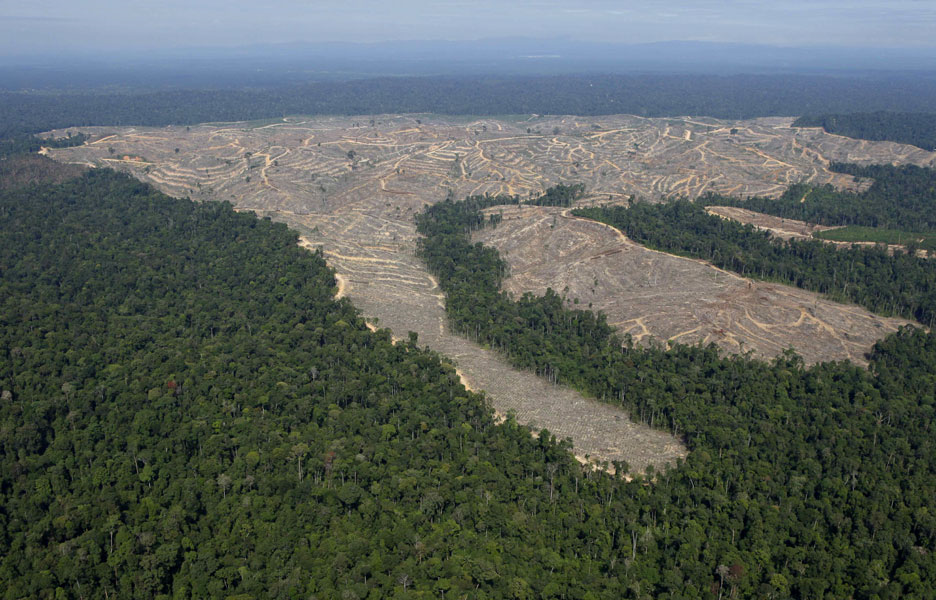
In the name of consumption
And industrial production
Habitat destruction
And climate change
Decreasing the range
Of plants and animals
They're not infallible
The sixth great wave of extinction?
Blink and you'll miss them
While we're busy
Raising billions of incomes
And industrial production
Habitat destruction
And climate change
Decreasing the range
Of plants and animals
They're not infallible
The sixth great wave of extinction?
Blink and you'll miss them
While we're busy
Raising billions of incomes
J. R. McNeill's Something New Under the Sun: An Environmental History of the Twentieth Century (2000) surveys the impact of human activity on the biosphere, atmosphere, hydrosphere (rivers, lakes, seas, etc.) and the lithosphere (soil and Earth's crust). It is an arresting alternative history of the last 100 years. It mentions the sixth great wave of extinction but does not explore it in detail.
Vaclav Smil's Catastrophes and Trends (2008) also considers the state of the environment, as well as contemporary economic, demographic and political trends, and their strategic relevance for states. Smil also attempts to quantify the level of risk we face from a range of possible catastrophes, from supervolcanoes to asteroid impacts to terrorism, an ambitious project.
Vaclav Smil's Catastrophes and Trends (2008) also considers the state of the environment, as well as contemporary economic, demographic and political trends, and their strategic relevance for states. Smil also attempts to quantify the level of risk we face from a range of possible catastrophes, from supervolcanoes to asteroid impacts to terrorism, an ambitious project.
And yet billions more
Will remain on the floor
Amid poverty, famine and war
Still the persistence
Of problems of subsistence!
While corporates enjoy freedom
That most can only dream of
And some will never conceive of
Let me abrupt:
Is there anything that isn't corrupt?
Will remain on the floor
Amid poverty, famine and war
Still the persistence
Of problems of subsistence!
While corporates enjoy freedom
That most can only dream of
And some will never conceive of
Let me abrupt:
Is there anything that isn't corrupt?
The International Labour Organisation estimated in a 2012 report that '20.9 million people are victims of forced labour globally.'
See also slaveryfootprint.org.
See also slaveryfootprint.org.
Reading the news magazine Private Eye and other news media here in the UK over the past 5-10 years, it has become increasingly difficult to avoid the conclusion that corruption, in various forms, is rife at the highest levels of UK politics. The most common is perhaps the device by which a minister or civil servant signs a deal with the private sector to outsource some service or sell off an asset on terms unfavourable to the taxpayer (i.e. all of us), but very lucrative for the company involved. Excuses and buck-passing are rolled out as prices rise and quality declines, or the asset's true market value is revealed when sold on. Lo! 2-3 years later, the same minister is employed by the same company (or perhaps by their investors or a closely-linked supplier) on a six-figure salary. Lately, 'lobbying', a euphemism for bribery, is a growing scandal. Not to mention corporate tax avoidance, PFI scandals, the illegal invasion of Iraq in 2003, MPs expenses… the list goes on.
In 2005, Noam Chomsky described the USA as "a 'failed state'. It has formal democratic institutions, but they barely function". Steven Harper's Canada and the recently-elected (Sep 2013) Tony Abbott in Australia represent the triumph of carbon resource-extraction corporate interests in those countries. These are some of the largest supposedly liberal democracies.
I am less well-informed to comment on continental Europe or elsewhere in the world, but we might consider Berlusconi's Italy or Greece's record of defrauding the EU out of billions since 2003. The former Soviet Union appears to have been succeeded by mafia states and oil empires. As for India, the world's largest democracy, a study conducted by Transparency International in 2005 found that more than 62% of Indians (population = 1.2 billion) had firsthand experience of paying bribes, as reported on Wikipedia).
In 2005, Noam Chomsky described the USA as "a 'failed state'. It has formal democratic institutions, but they barely function". Steven Harper's Canada and the recently-elected (Sep 2013) Tony Abbott in Australia represent the triumph of carbon resource-extraction corporate interests in those countries. These are some of the largest supposedly liberal democracies.
I am less well-informed to comment on continental Europe or elsewhere in the world, but we might consider Berlusconi's Italy or Greece's record of defrauding the EU out of billions since 2003. The former Soviet Union appears to have been succeeded by mafia states and oil empires. As for India, the world's largest democracy, a study conducted by Transparency International in 2005 found that more than 62% of Indians (population = 1.2 billion) had firsthand experience of paying bribes, as reported on Wikipedia).
And all this time,
It's getting hot in here!
It's getting hot in here
So turn up the air conditioning
And put more demand on the electricity system
Are we nearing
The time for Geo-engineering?
Growth without pollution -
What's the solution?
It's getting hot in here!
It's getting hot in here
So turn up the air conditioning
And put more demand on the electricity system
Are we nearing
The time for Geo-engineering?
Growth without pollution -
What's the solution?

Can we turn to
The wonders of technology?
Synthetic biology
Printing in 3D
Computers you wear
With big data to share
There's plenty opportunity
In connected communities:
I'm an MC
Taking M-double-O-Cs
The wonders of technology?
Synthetic biology
Printing in 3D
Computers you wear
With big data to share
There's plenty opportunity
In connected communities:
I'm an MC
Taking M-double-O-Cs
MOOC stands for 'Massive Online Open Course'; in the last 2-3 years several hugely popular platforms have been set up offering university-level modular online courses, devised and presented by university professors, free to anyone, anywhere in the world. They typically consist of video lectures, forum support, weekly quizzes, sometimes more demanding written assignments and perhaps a final quiz. The first large MOOCs began with computer science courses and content has gradually spread across many disciplines. Today there is a bewildering array of courses available and yet it is fair to say the phenomenon is still in its infancy.
Will they stay free forever? Don't wait to find out! The biggest platforms are Udacity, Coursera, and edX, but there are other smaller websites and the space is rapidly evolving. I personally use Coursera, and cannot recommend it enough. At the time of writing there is fantastic course in progress entitled The History of Humankind by Dr. Yuval Noah Harari; if you miss it this time round (Aug-Nov 2013), you can sign up for notification of the next time it runs.
Will they stay free forever? Don't wait to find out! The biggest platforms are Udacity, Coursera, and edX, but there are other smaller websites and the space is rapidly evolving. I personally use Coursera, and cannot recommend it enough. At the time of writing there is fantastic course in progress entitled The History of Humankind by Dr. Yuval Noah Harari; if you miss it this time round (Aug-Nov 2013), you can sign up for notification of the next time it runs.

You never know what you might find
From so many minds…
I hope you enjoyed this trip
Through olden times…
History don't repeat,
But it rhymes.
From so many minds…
I hope you enjoyed this trip
Through olden times…
History don't repeat,
But it rhymes.
Adapted from a quote attributed to Mark Twain.
